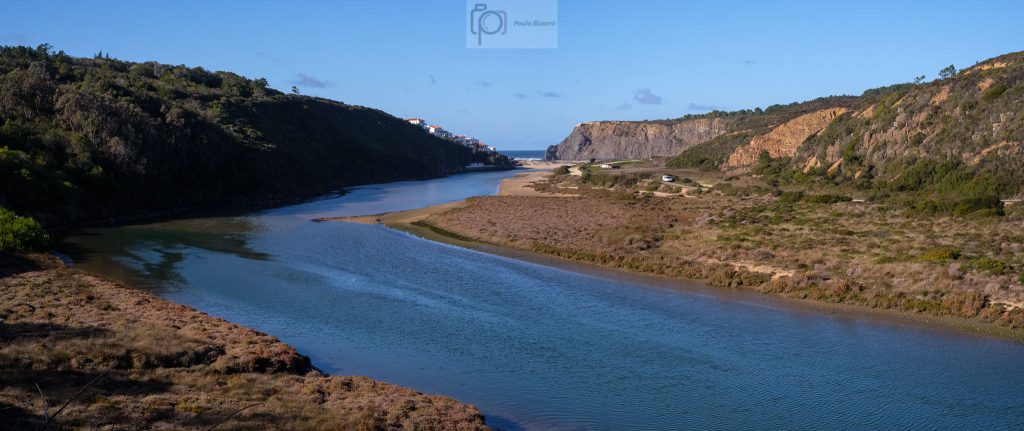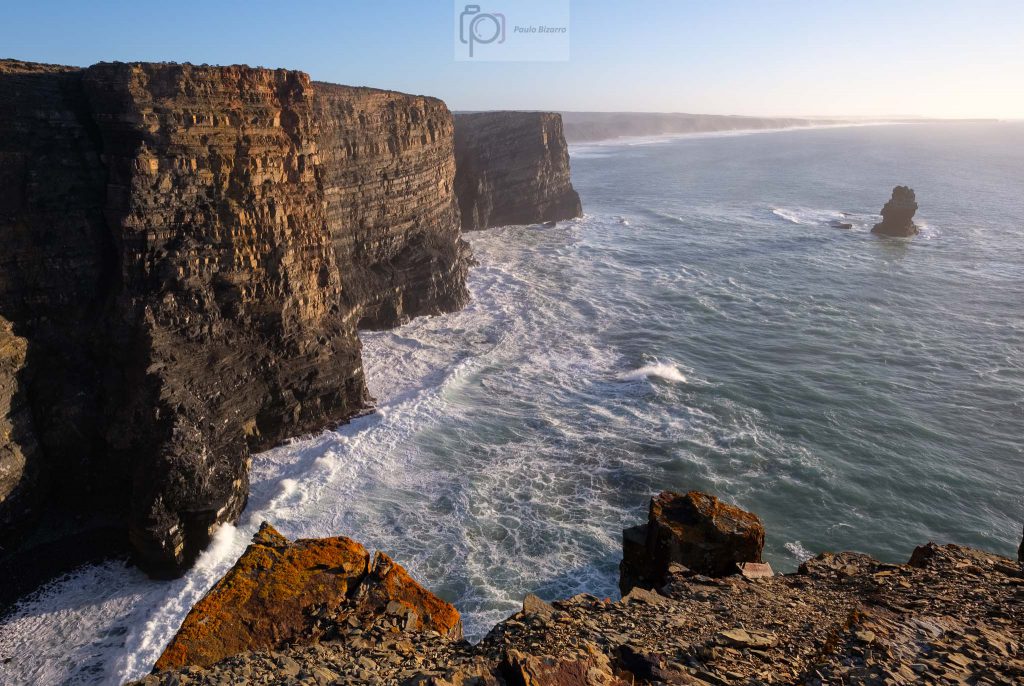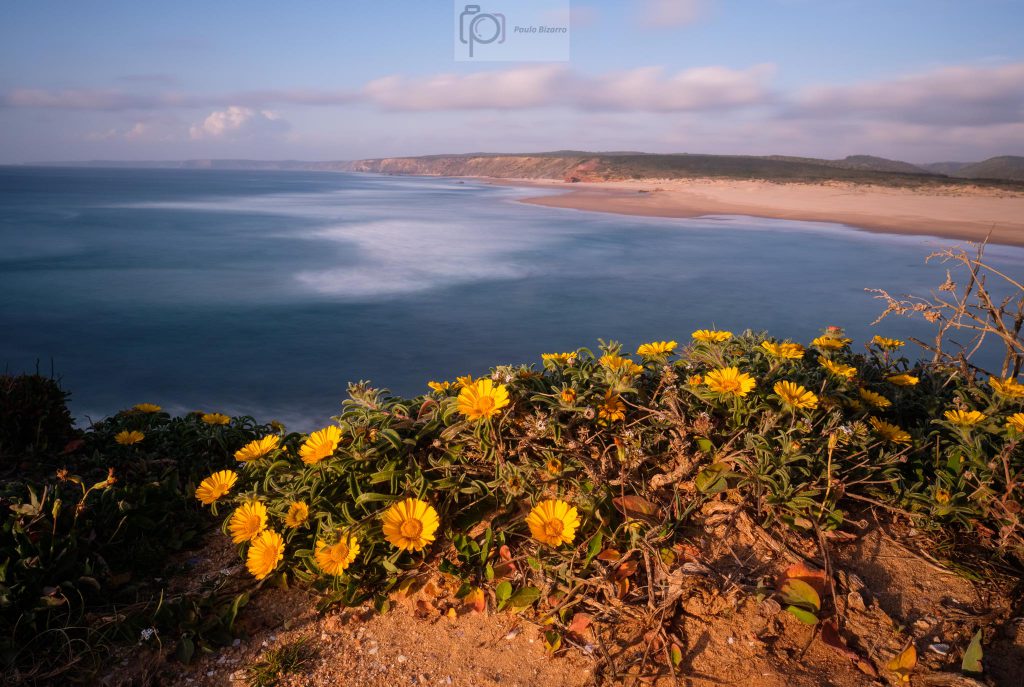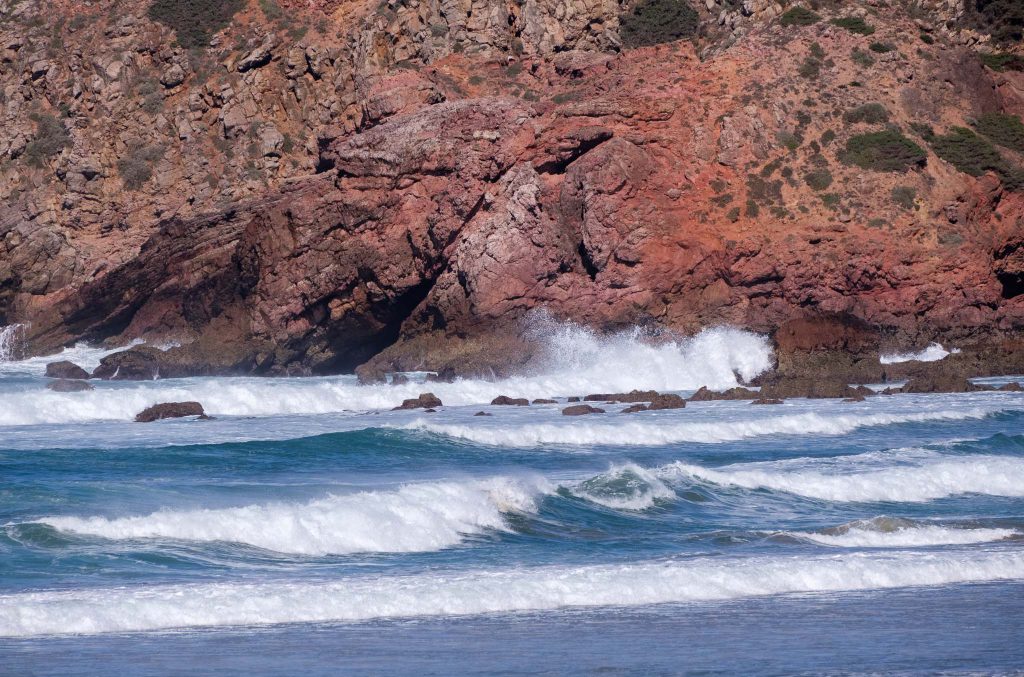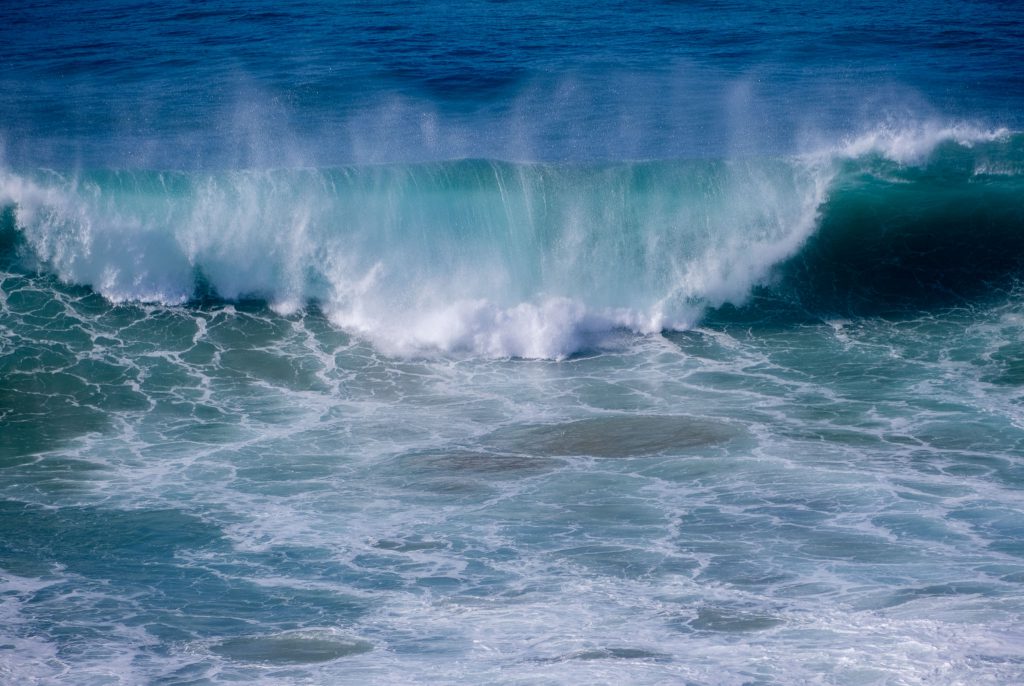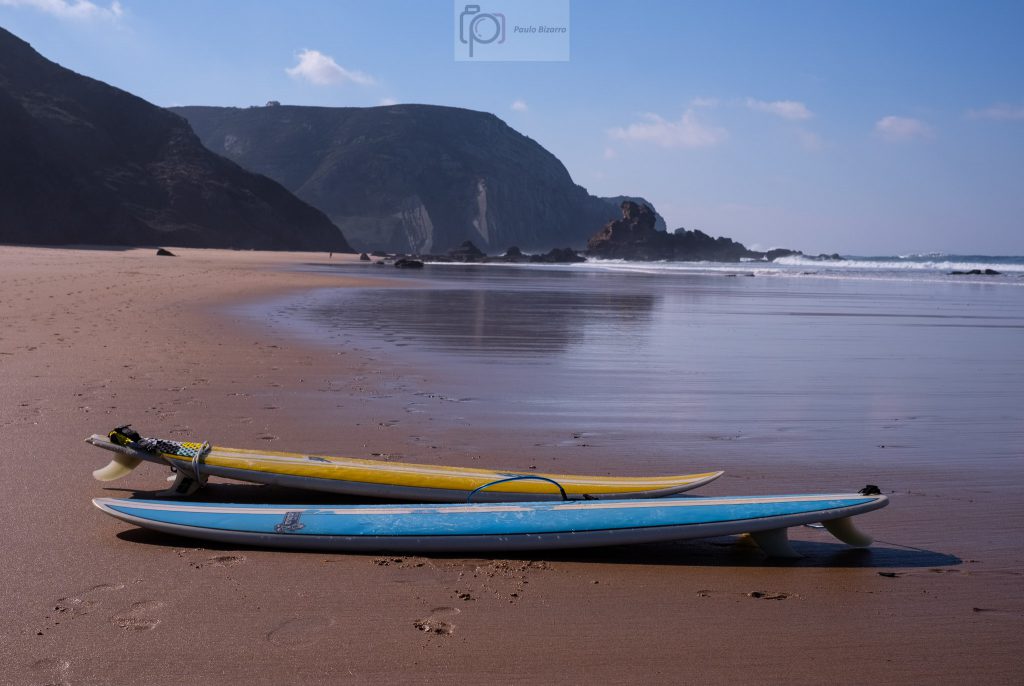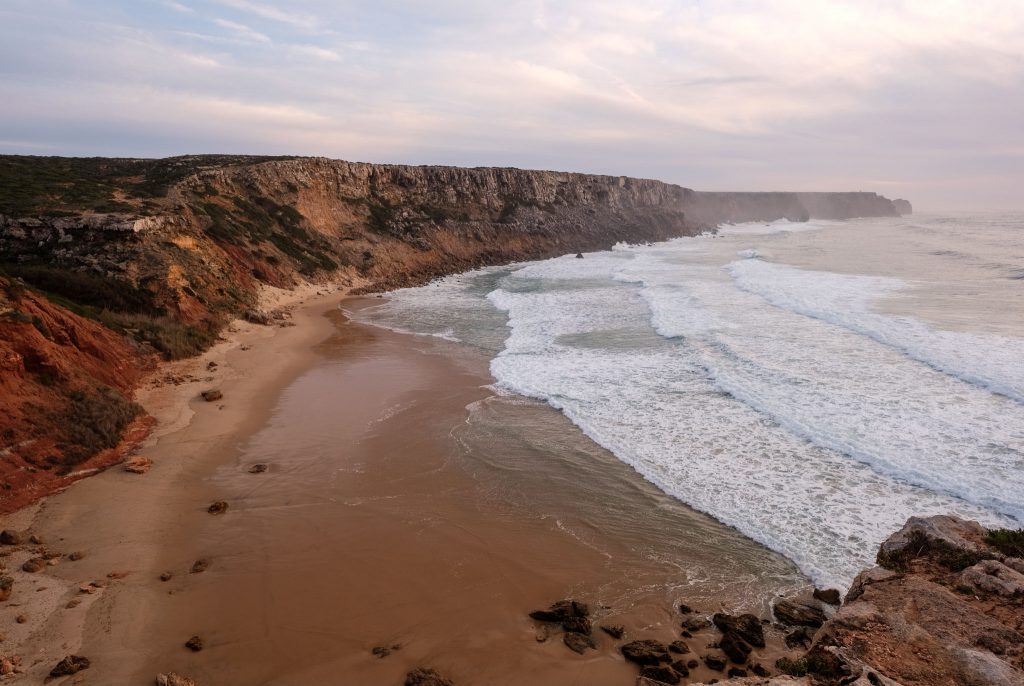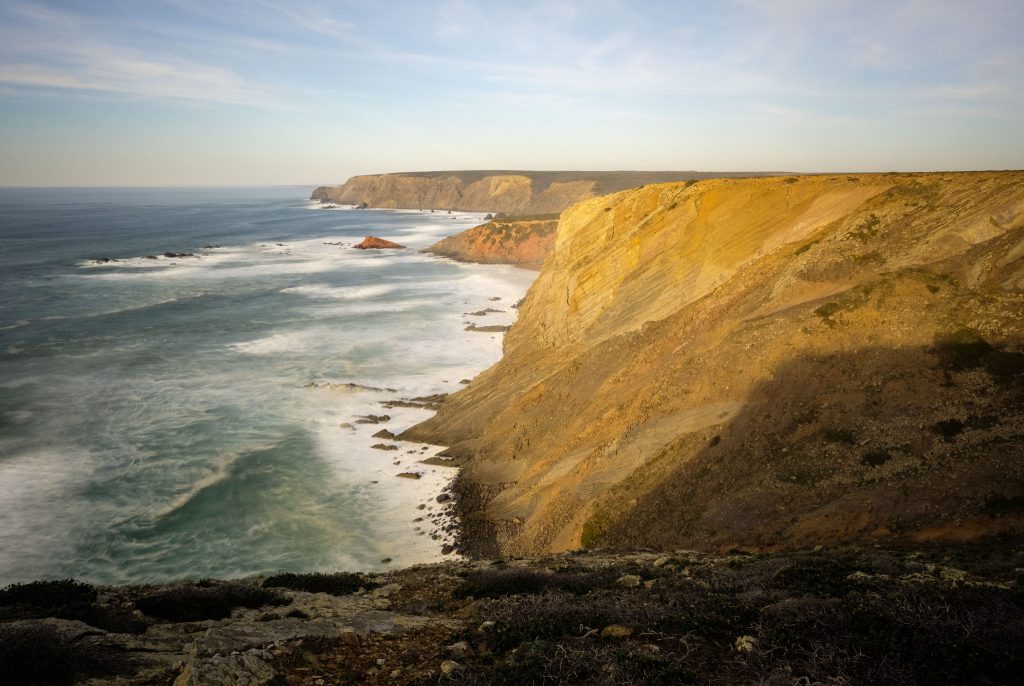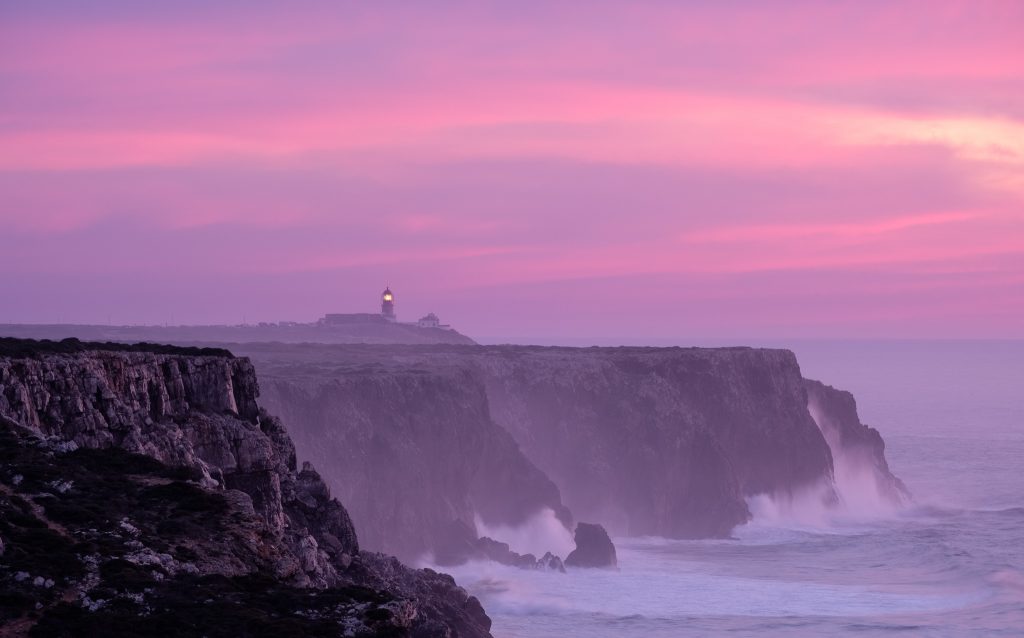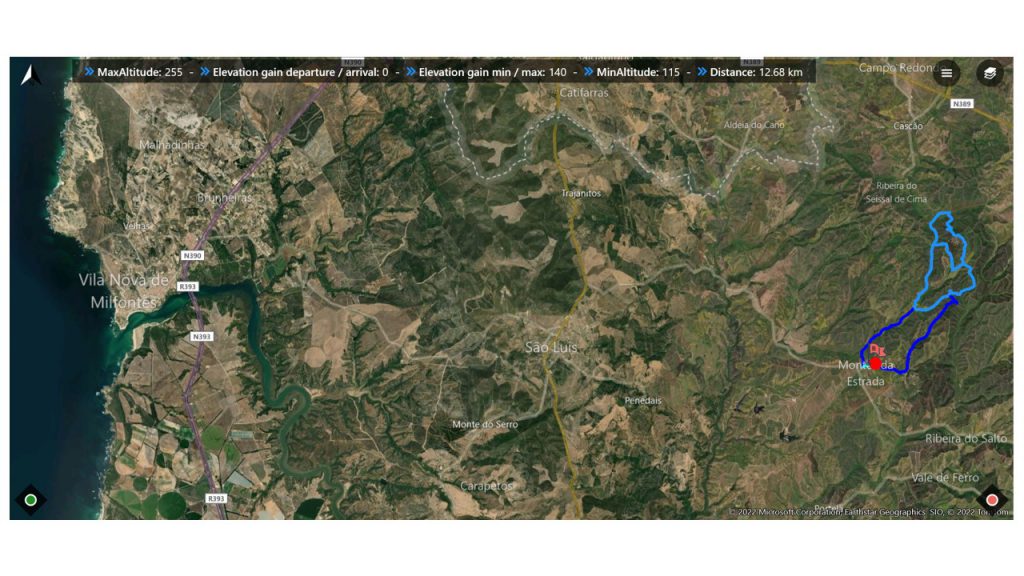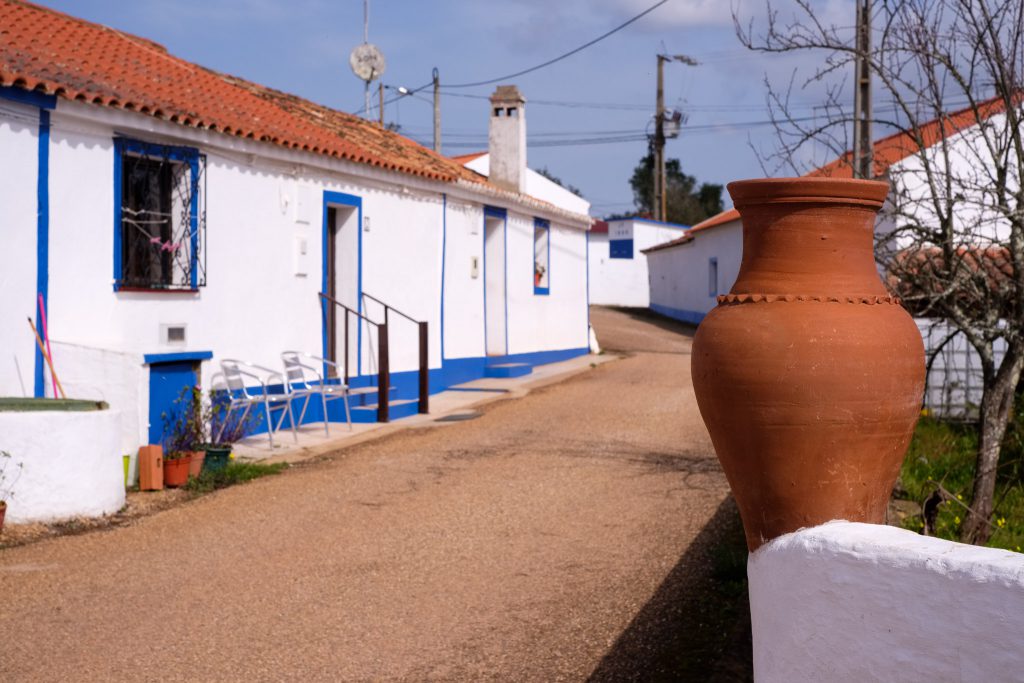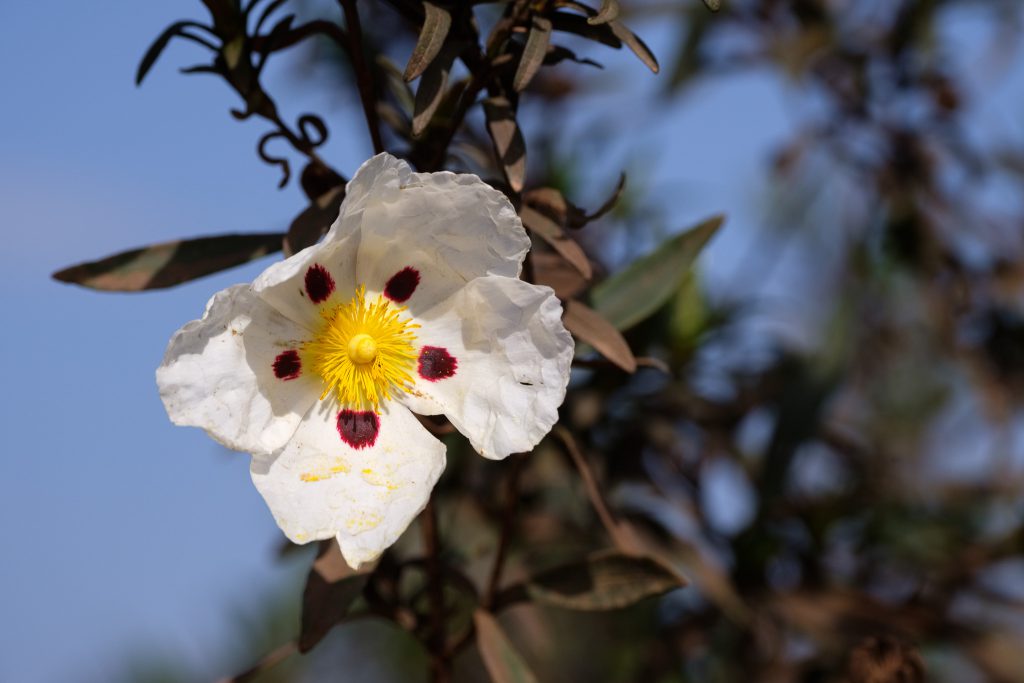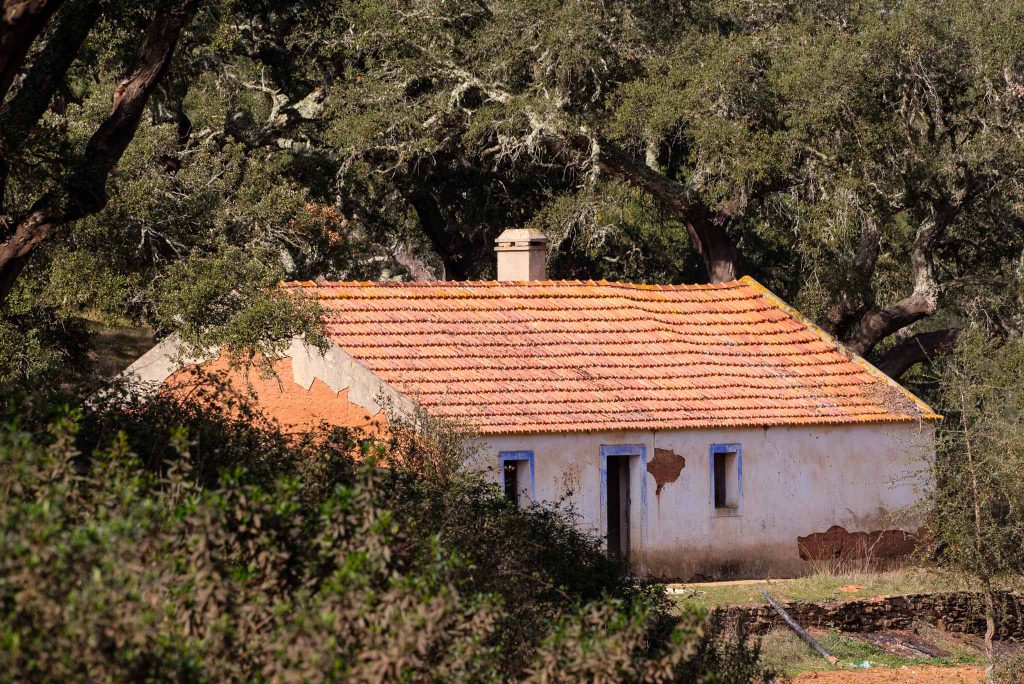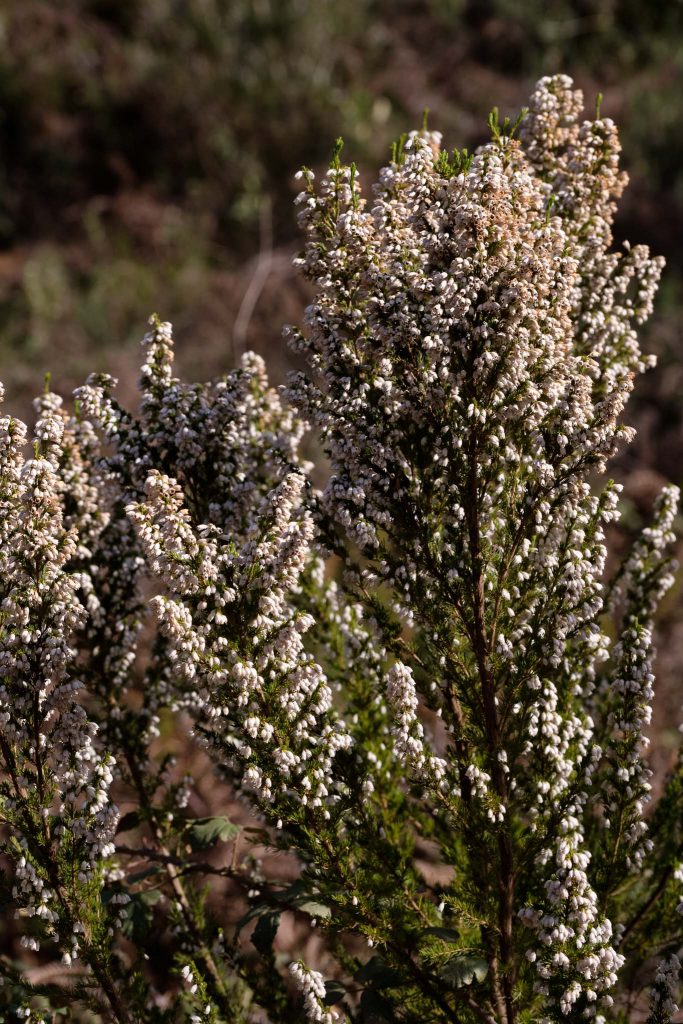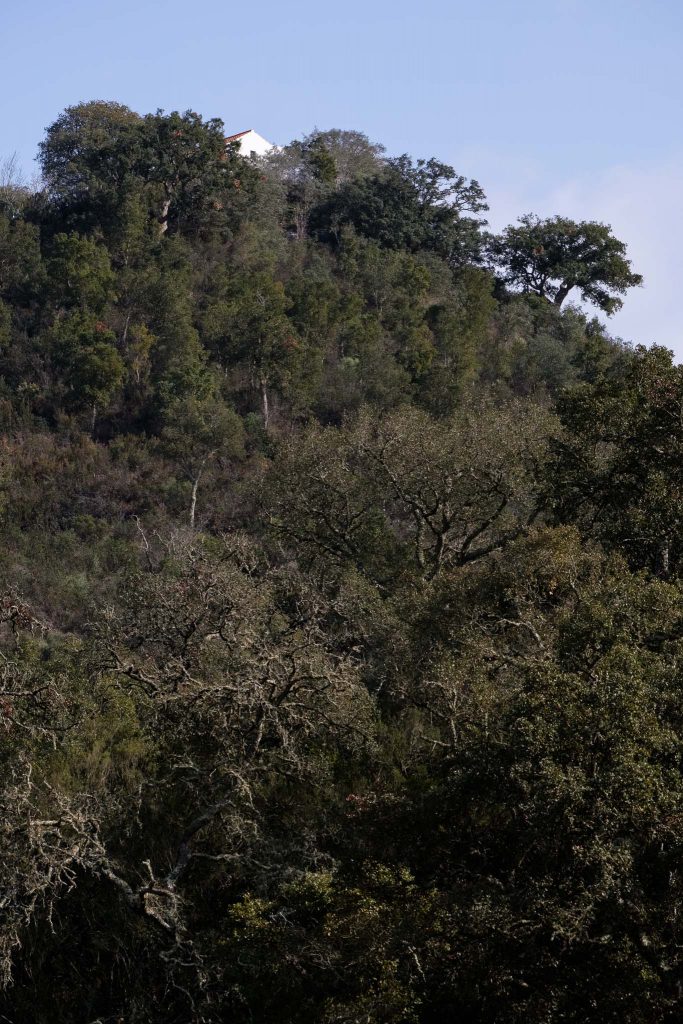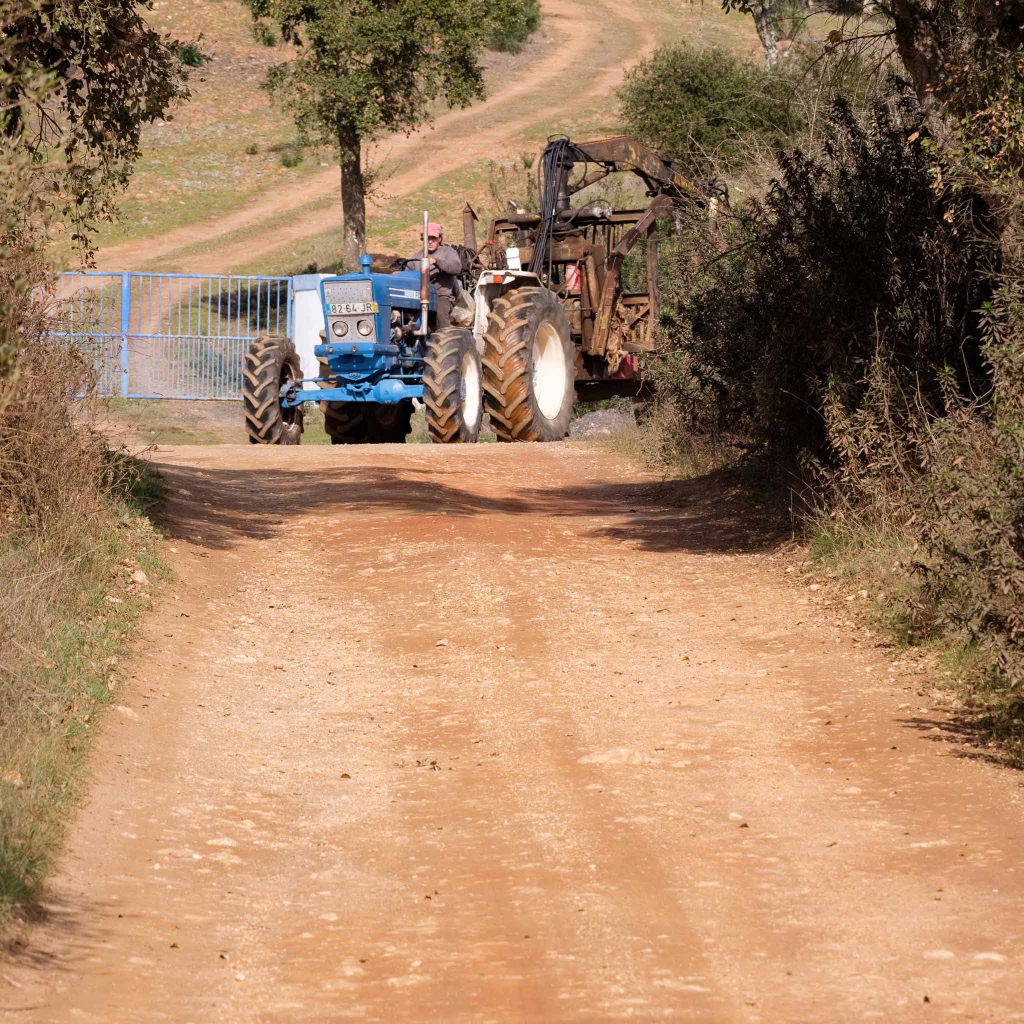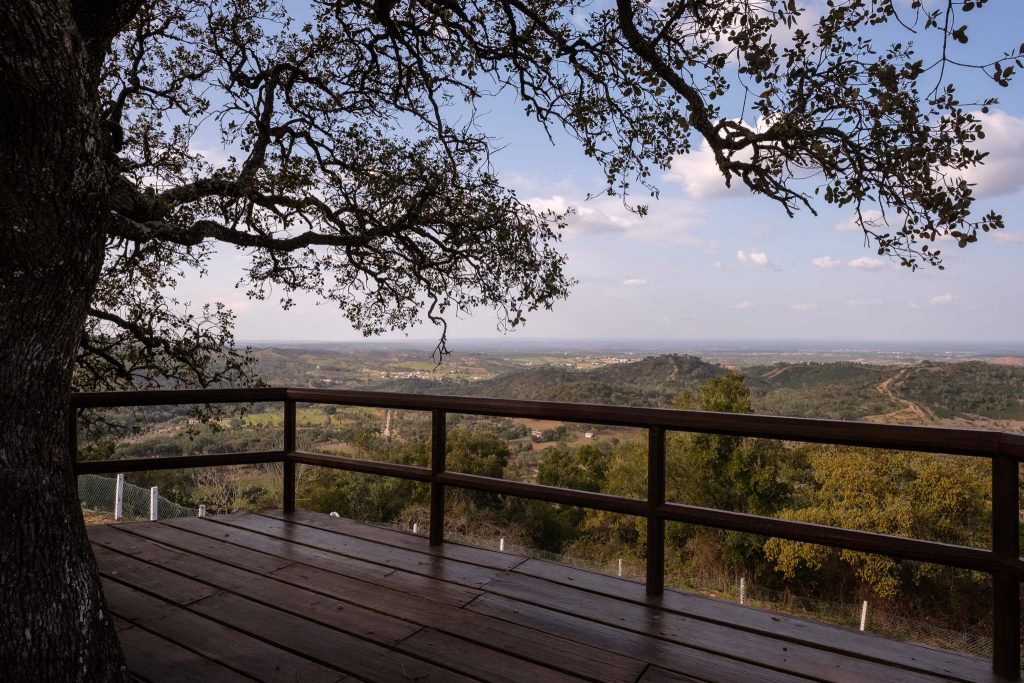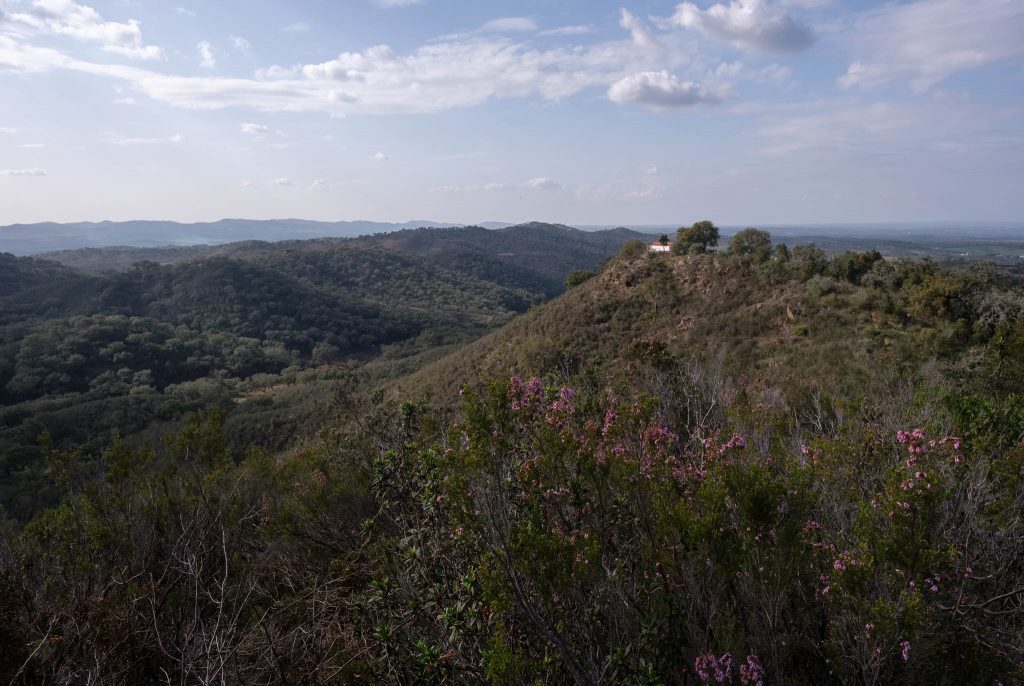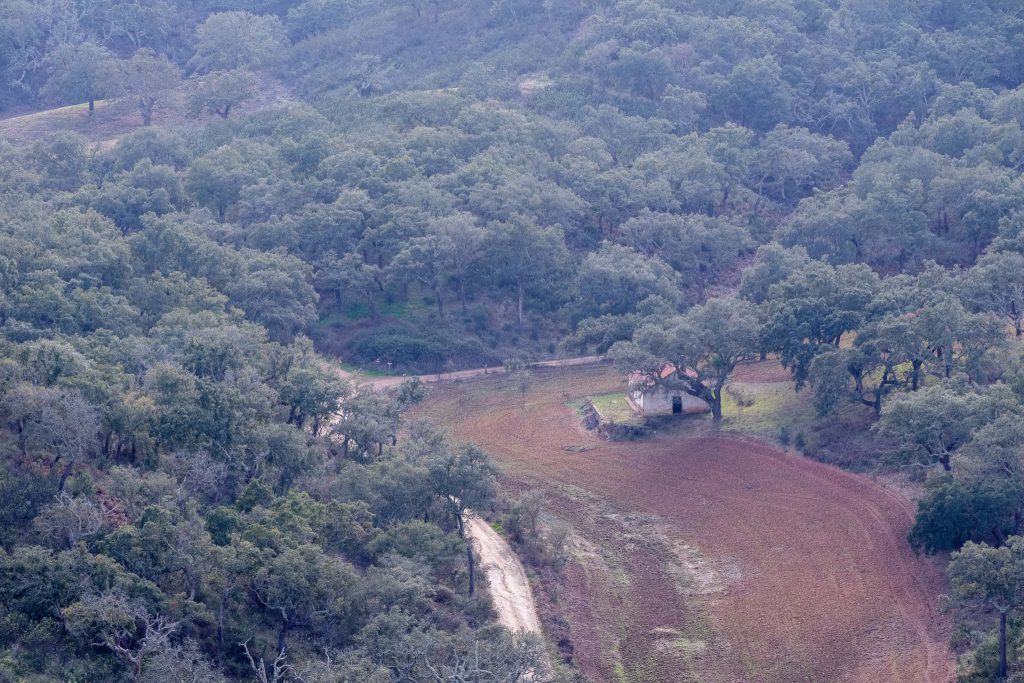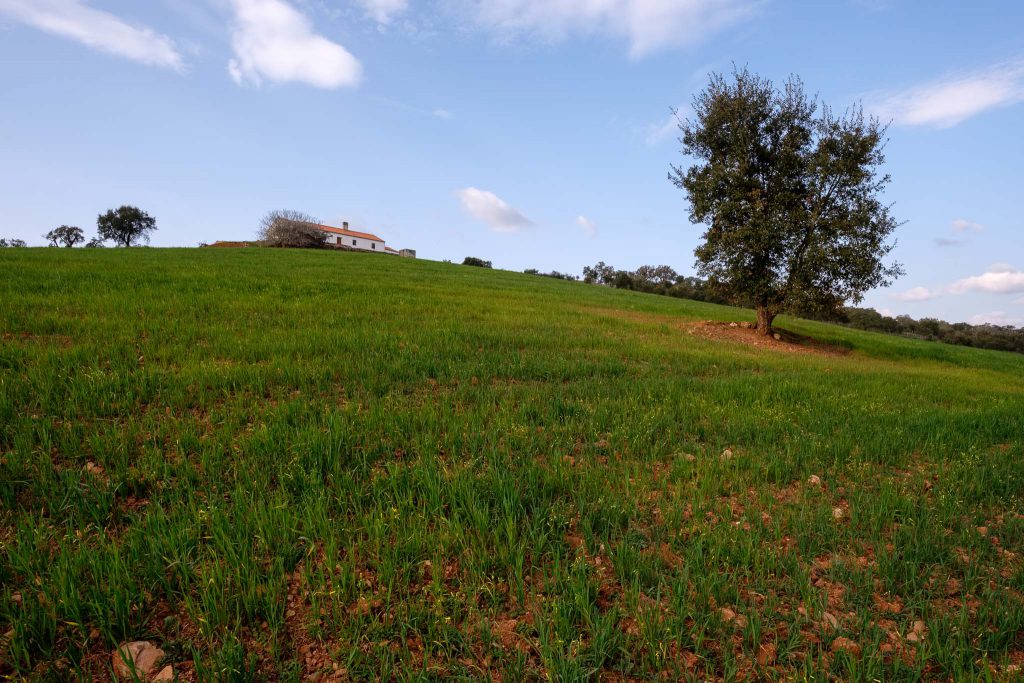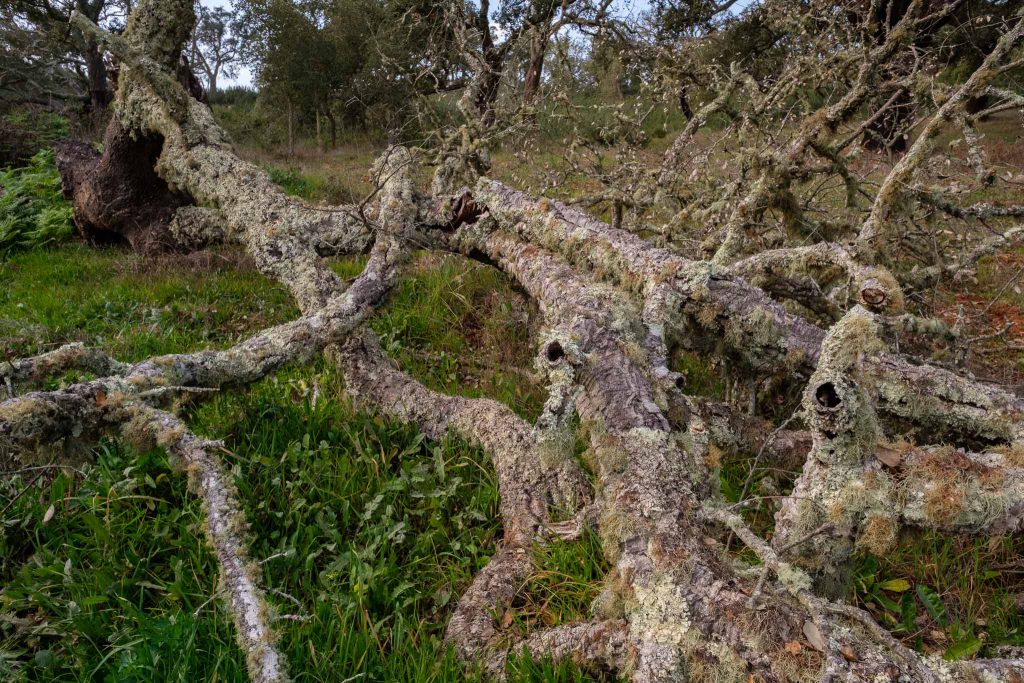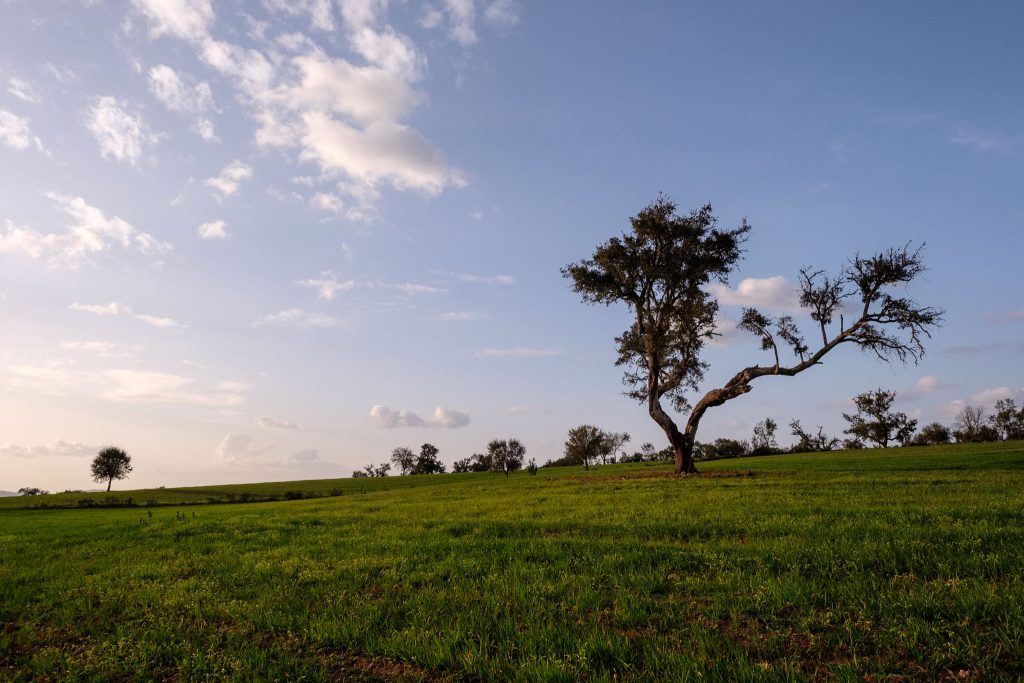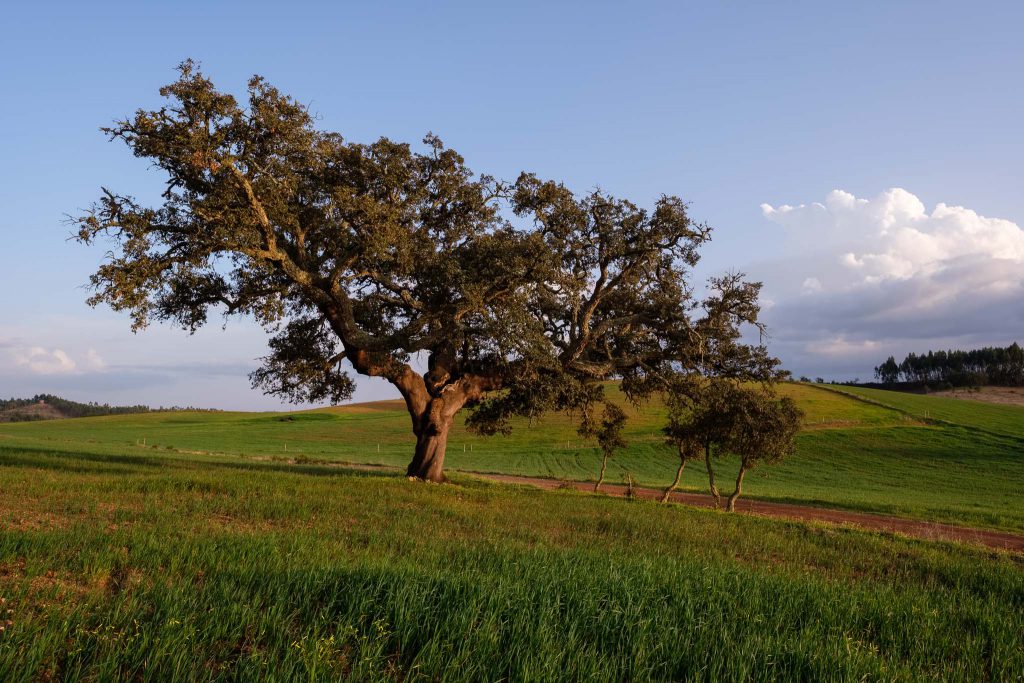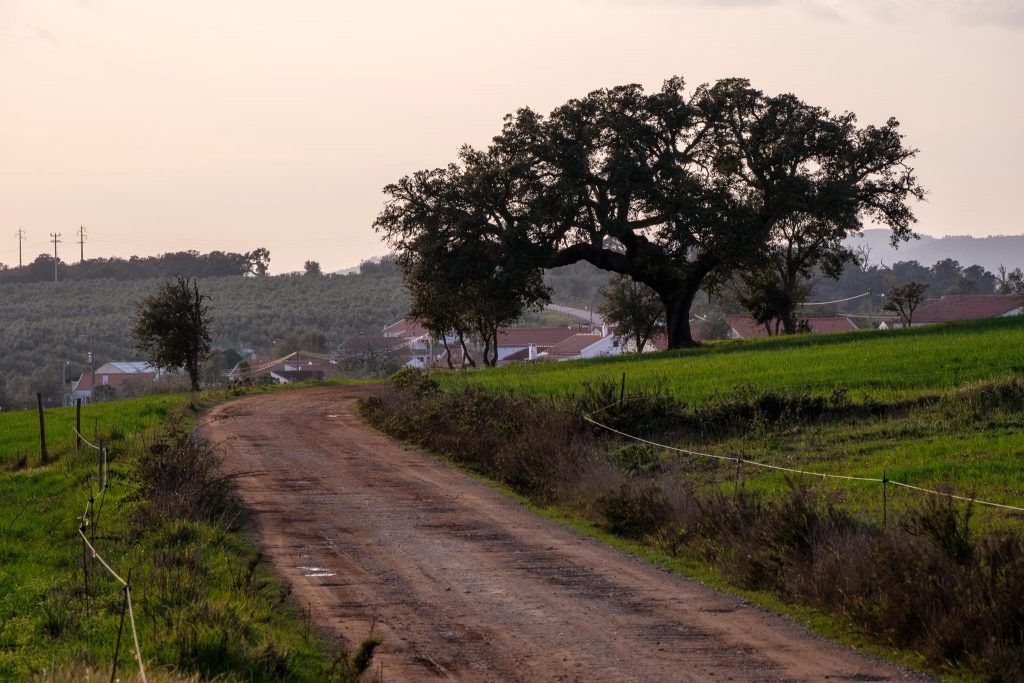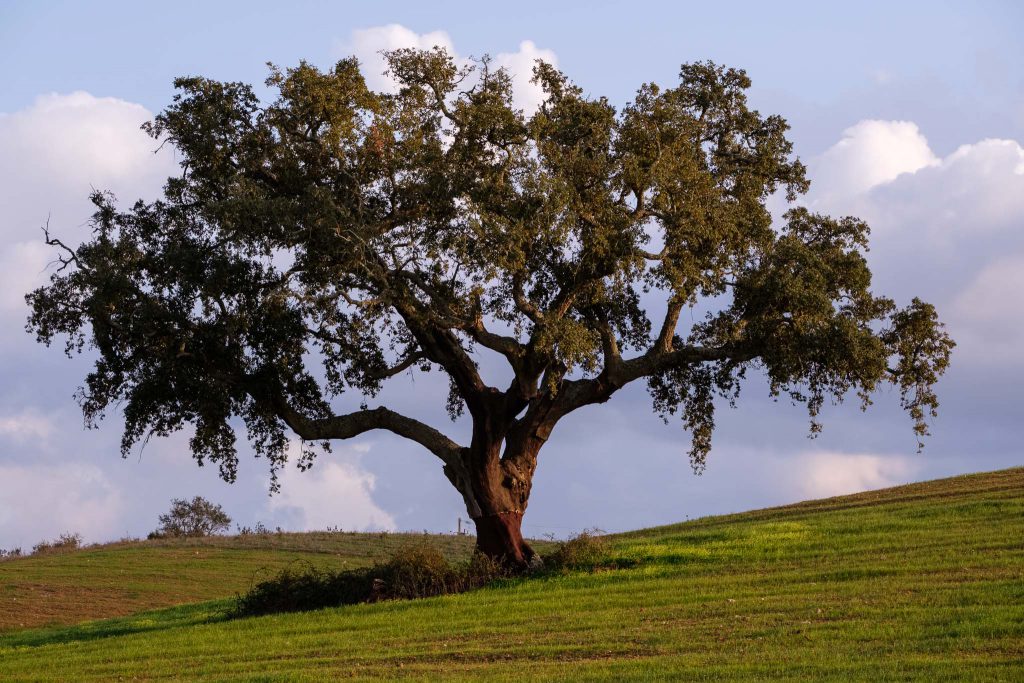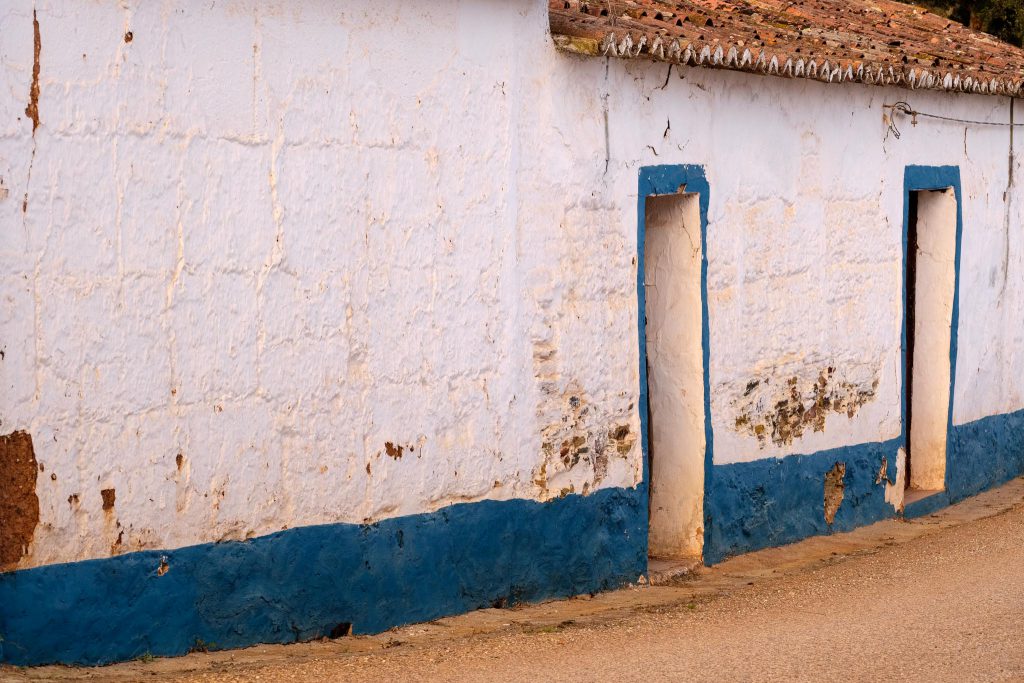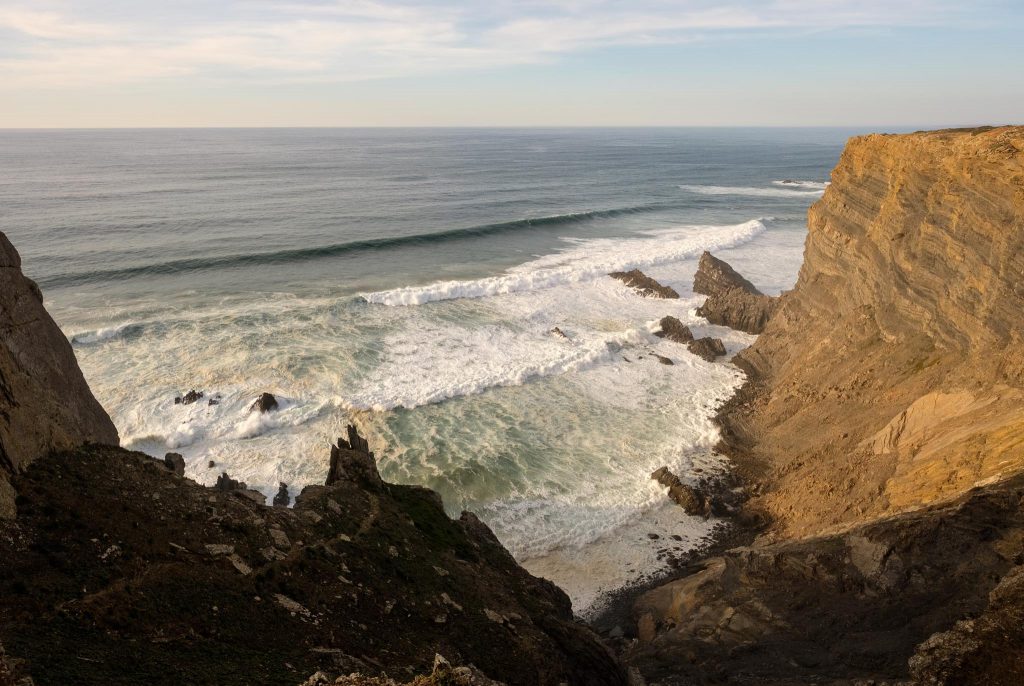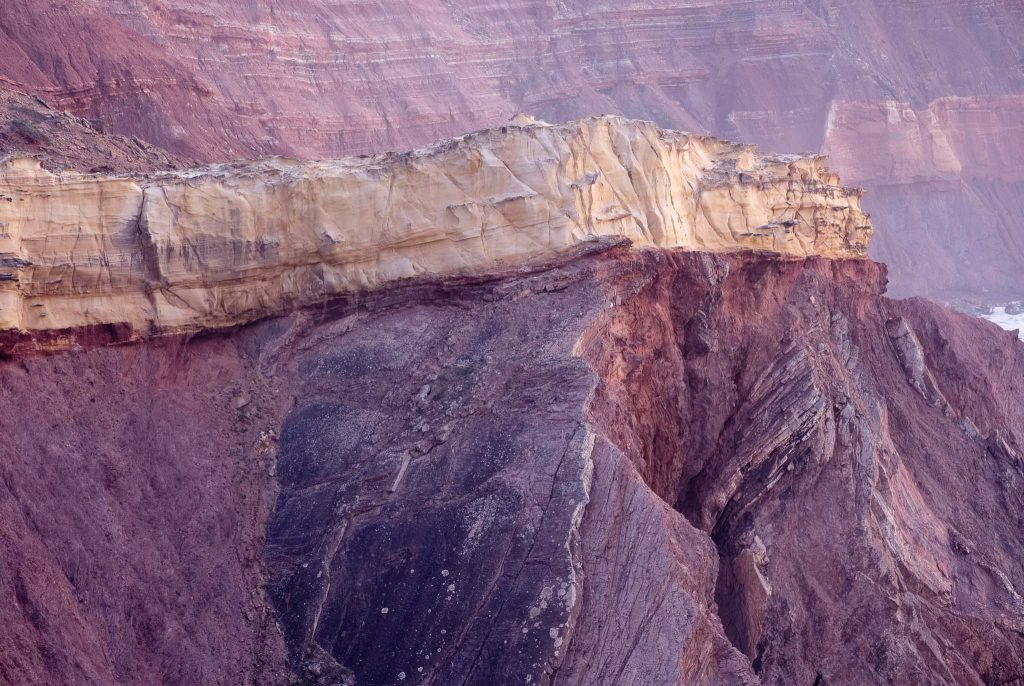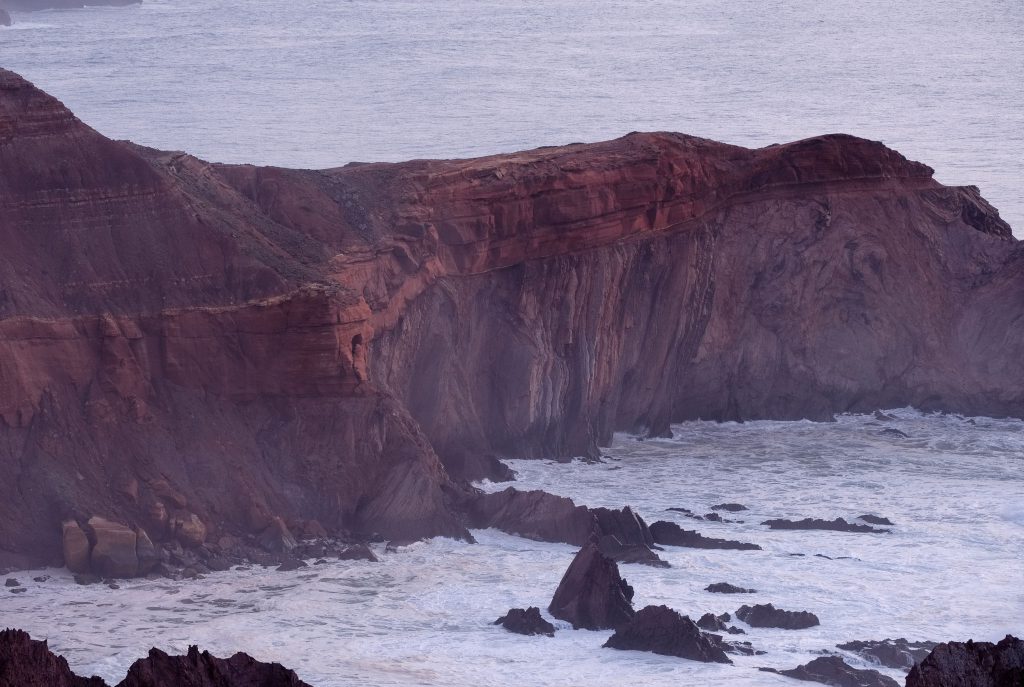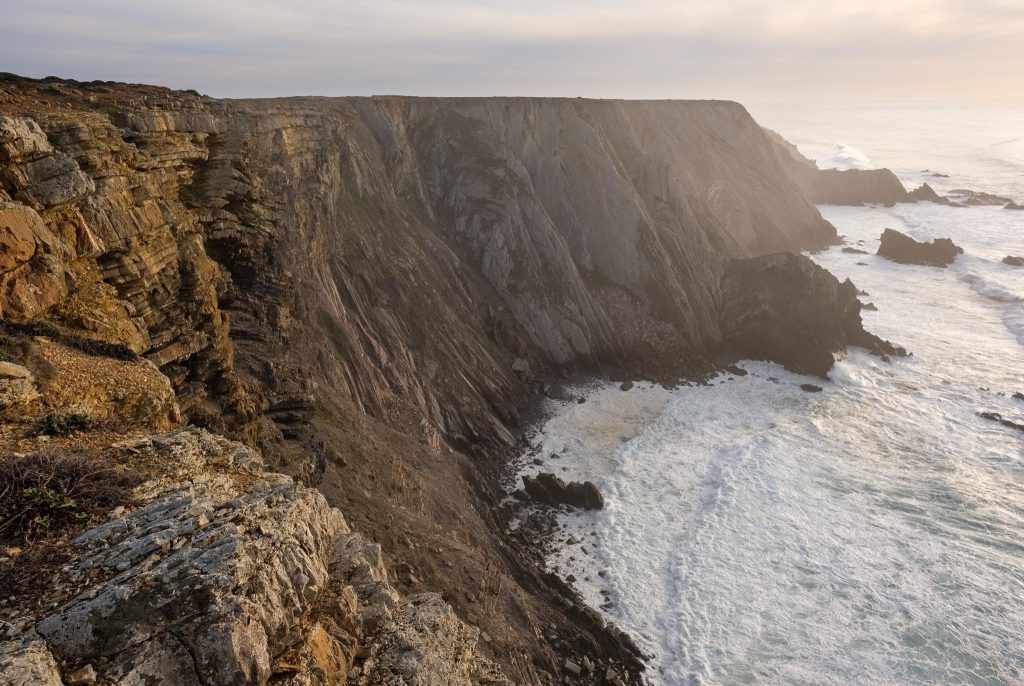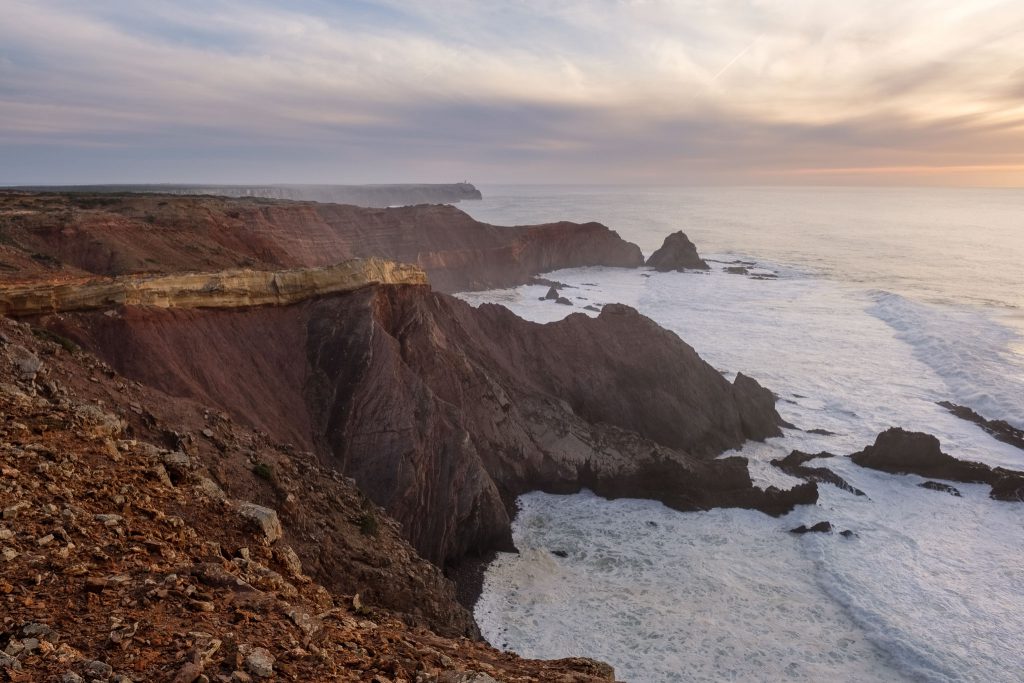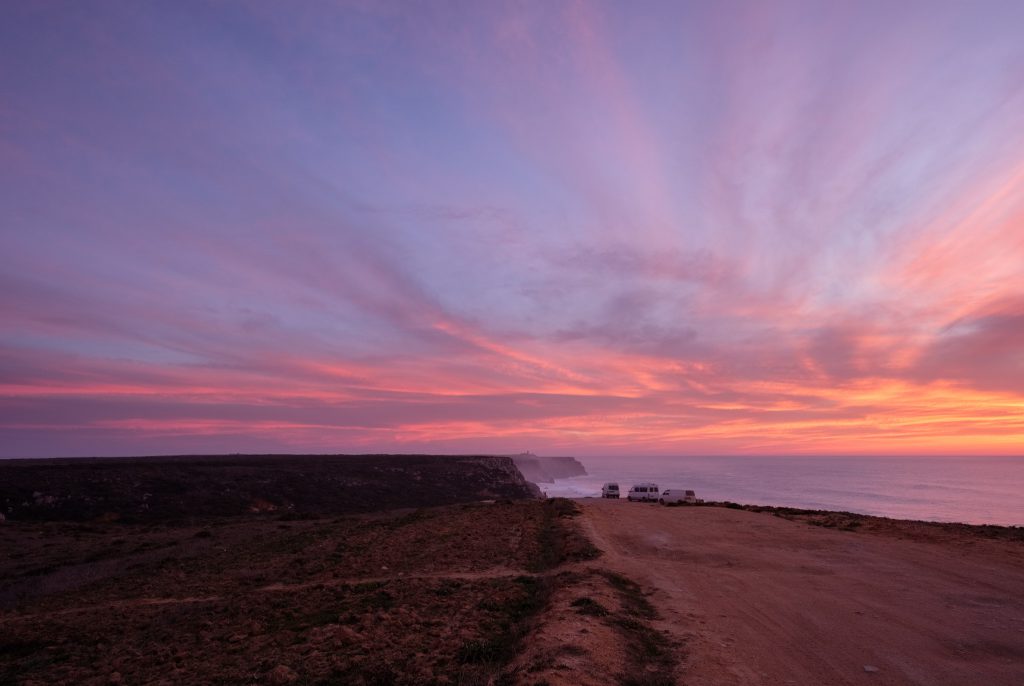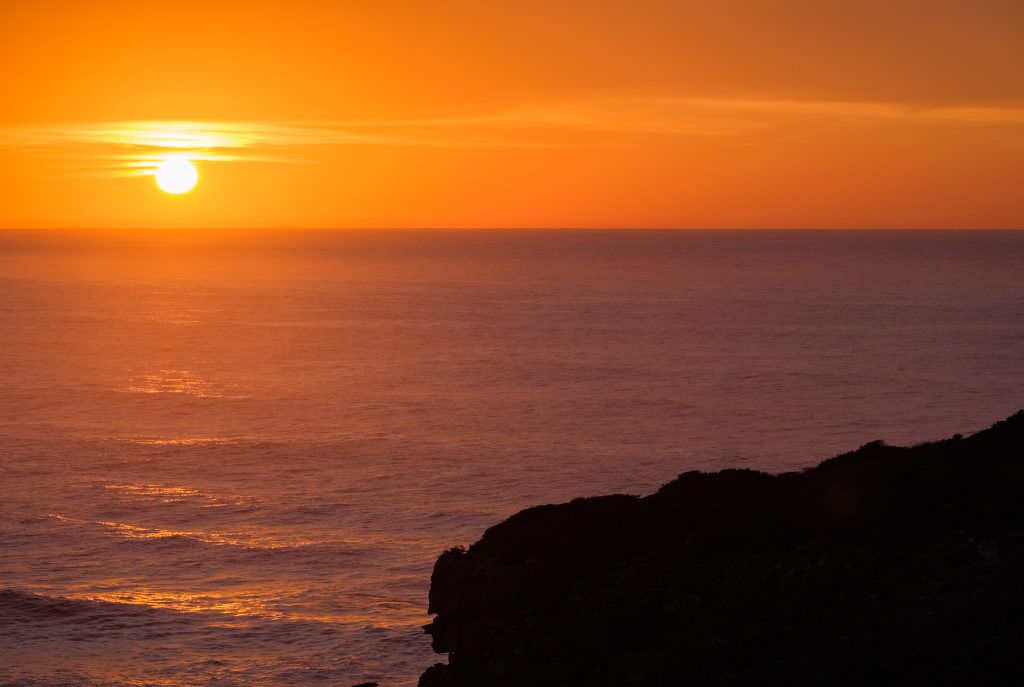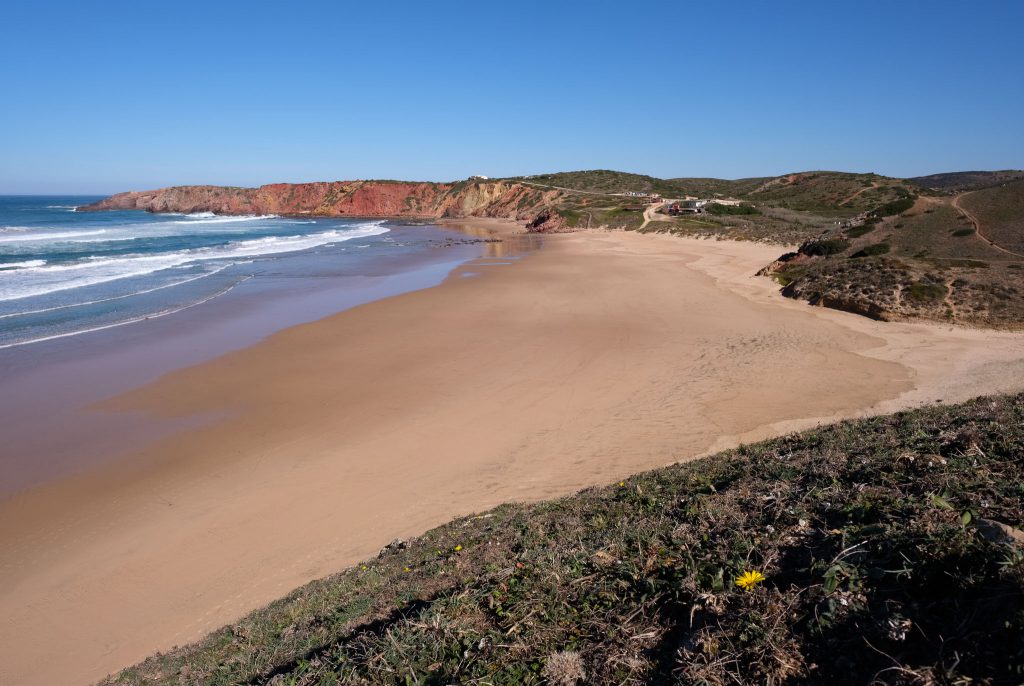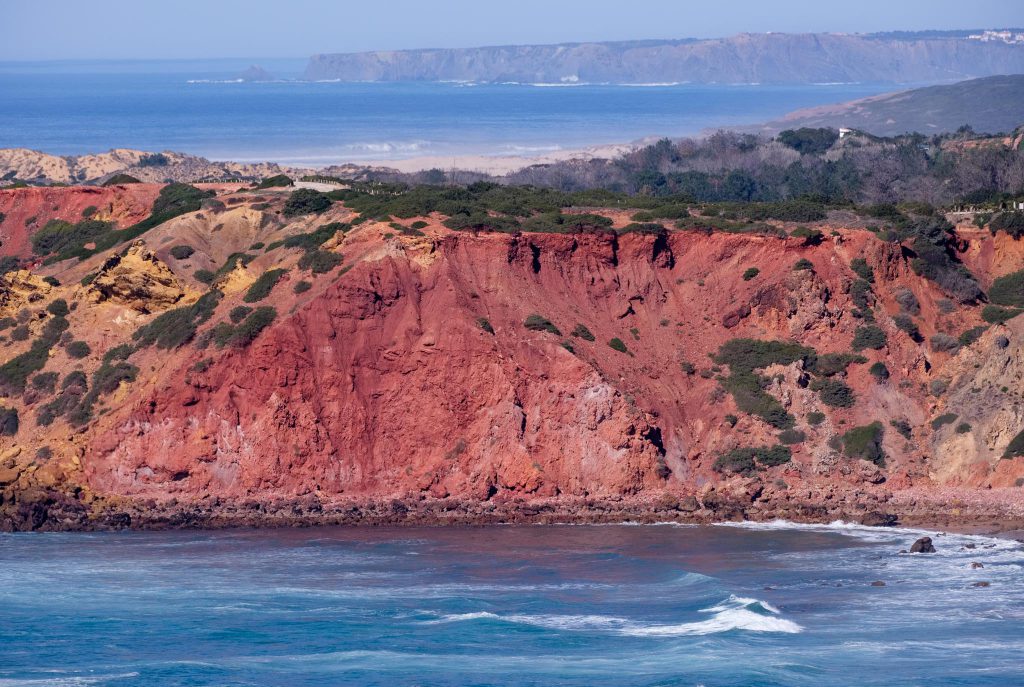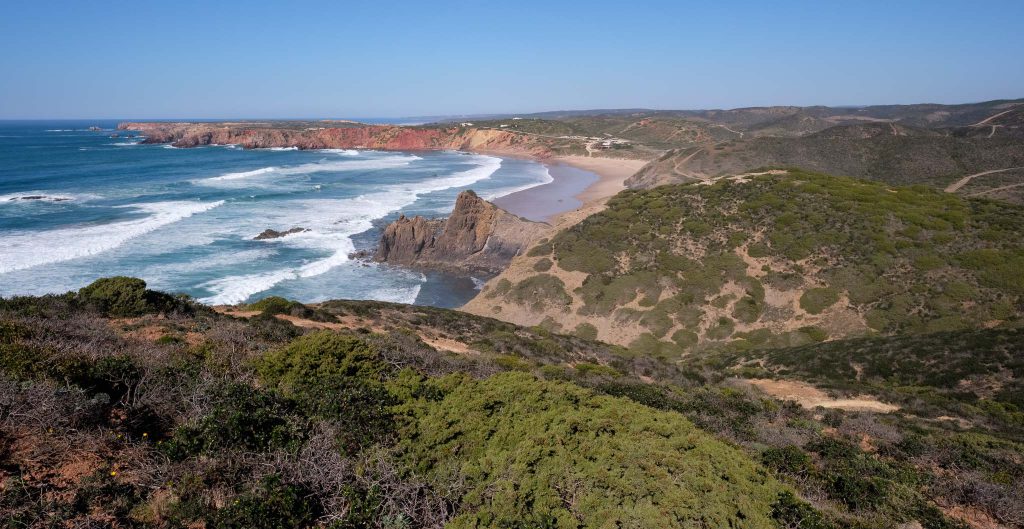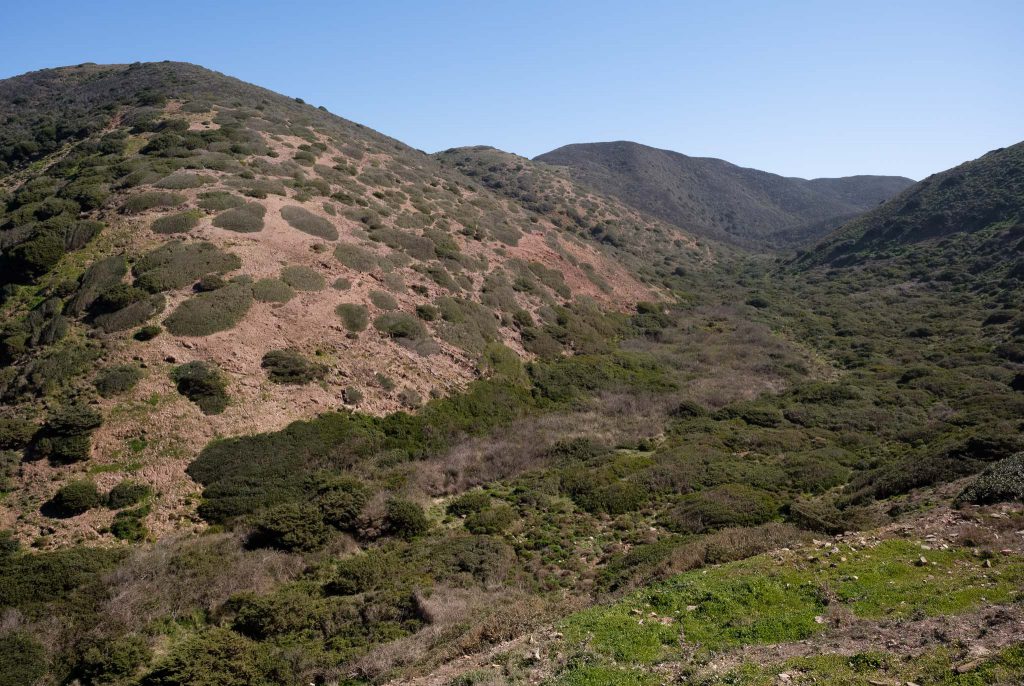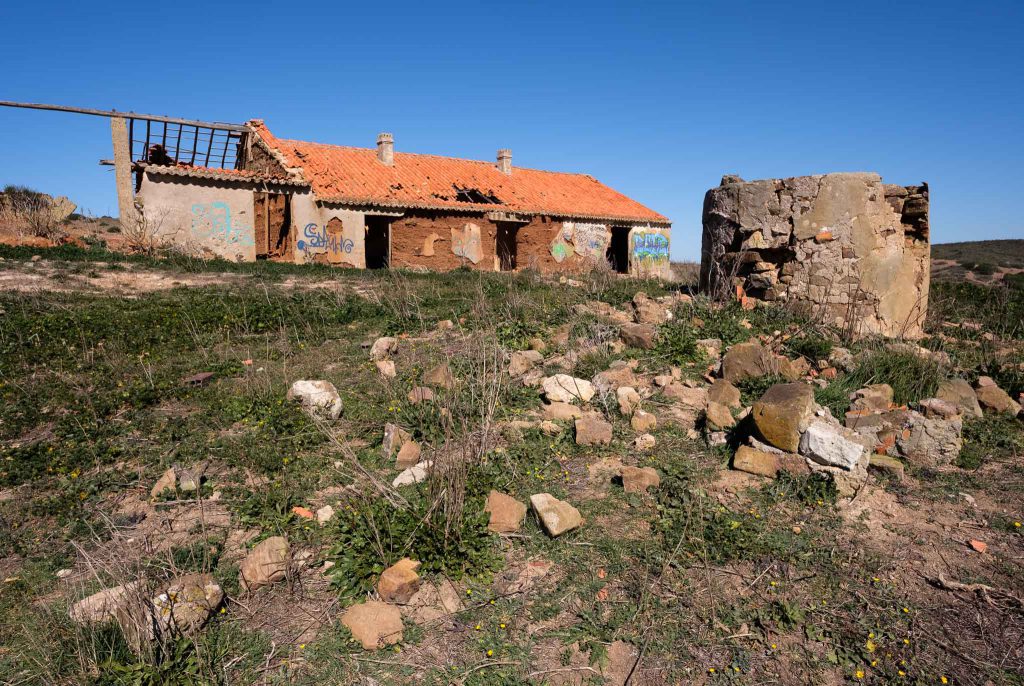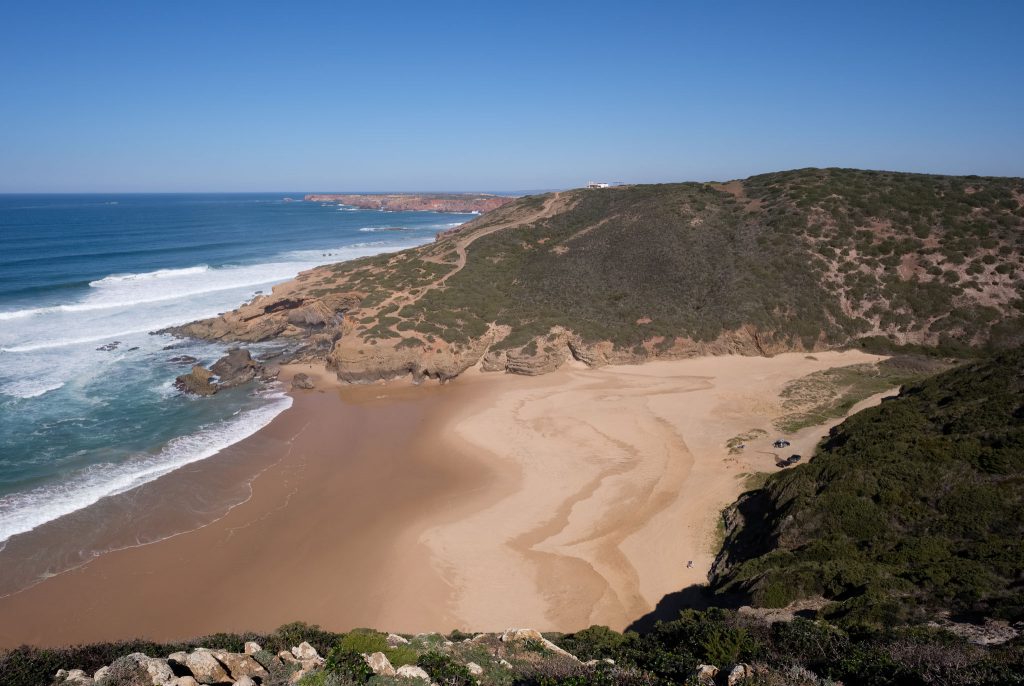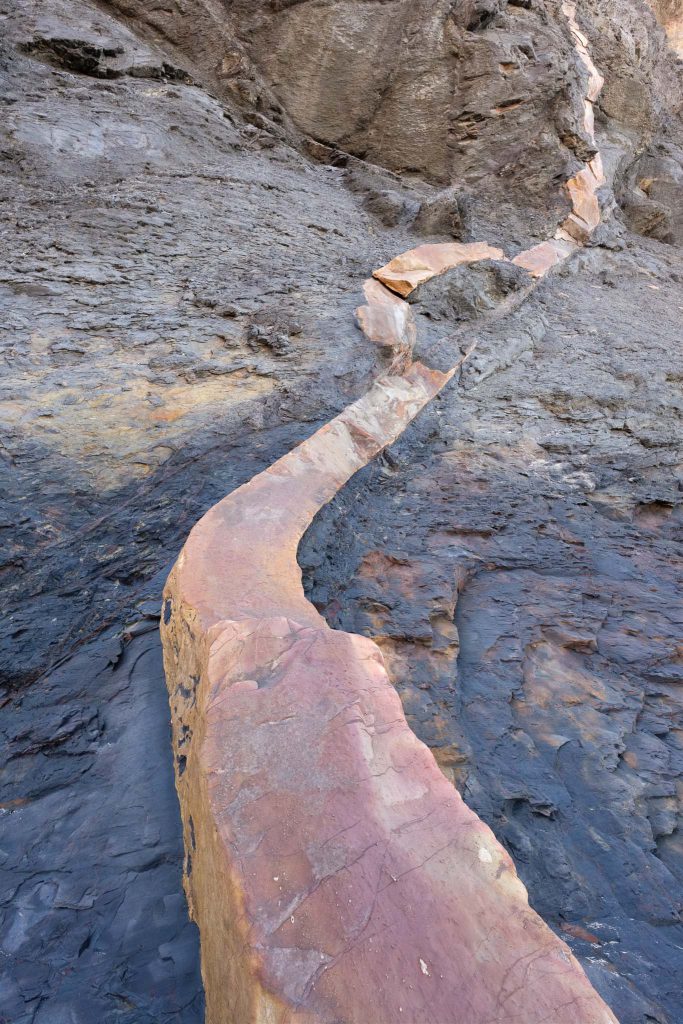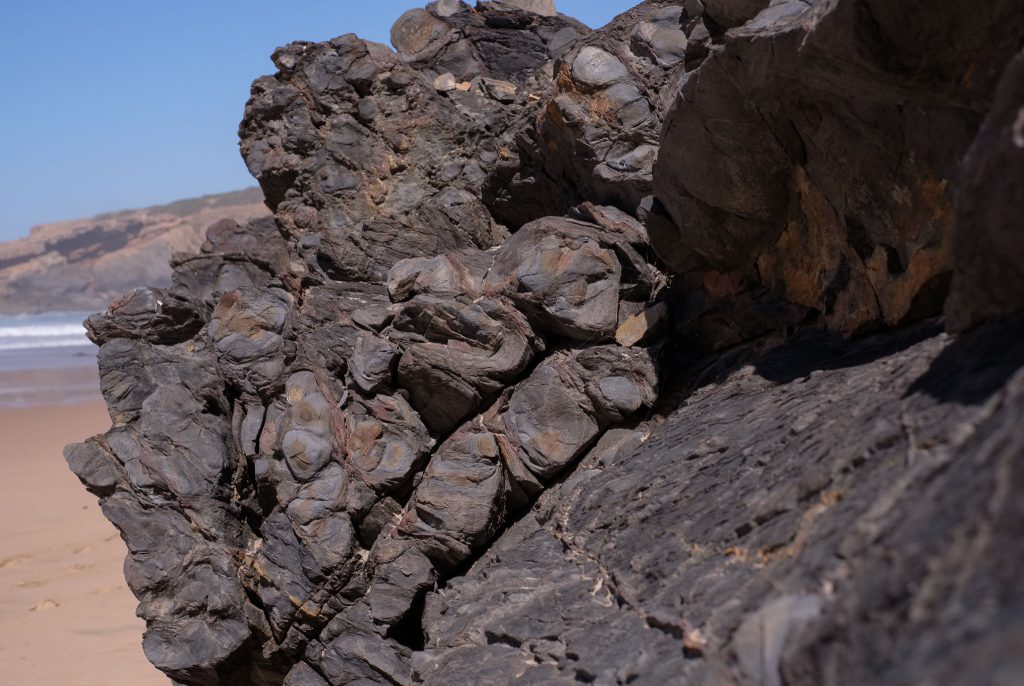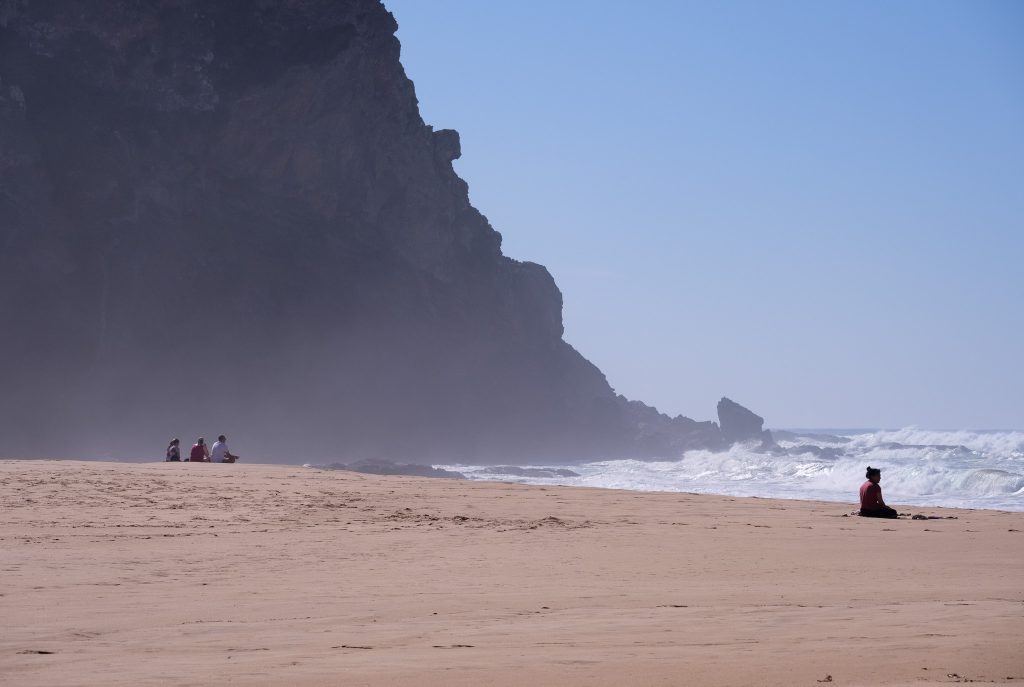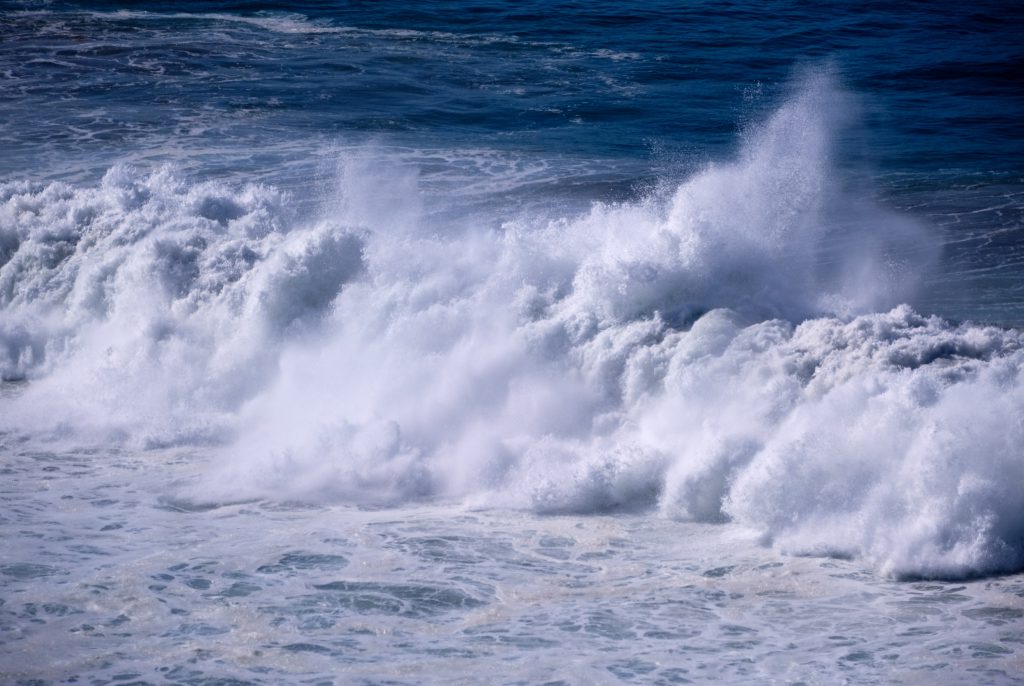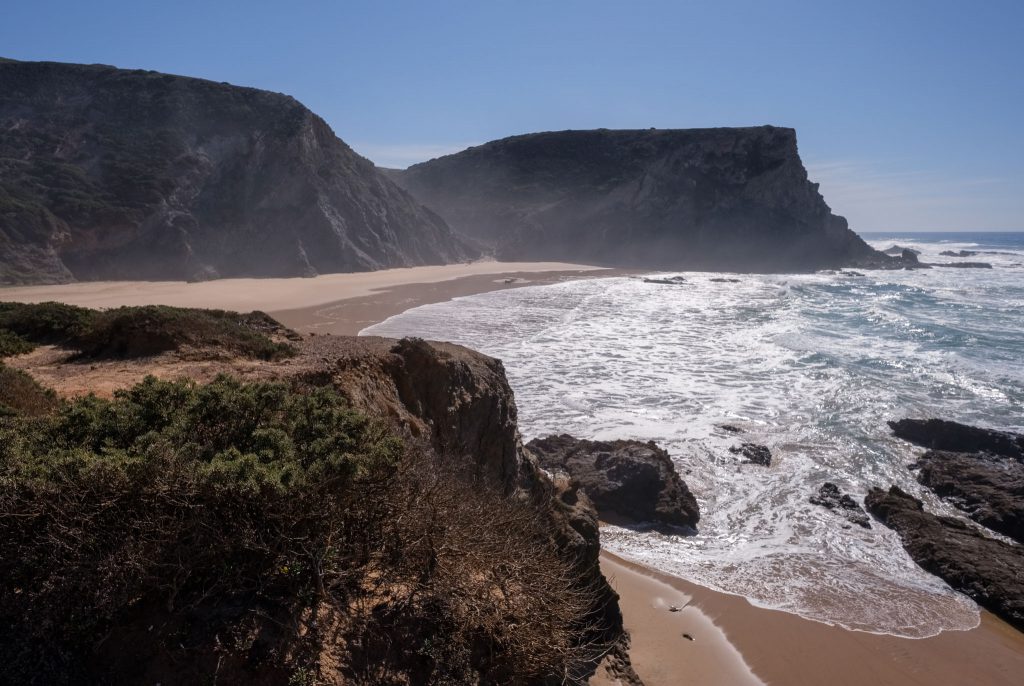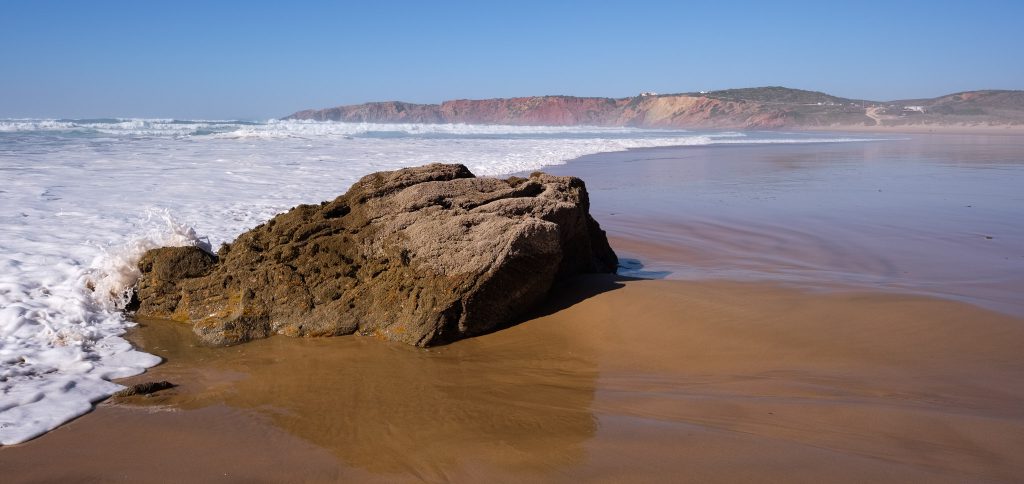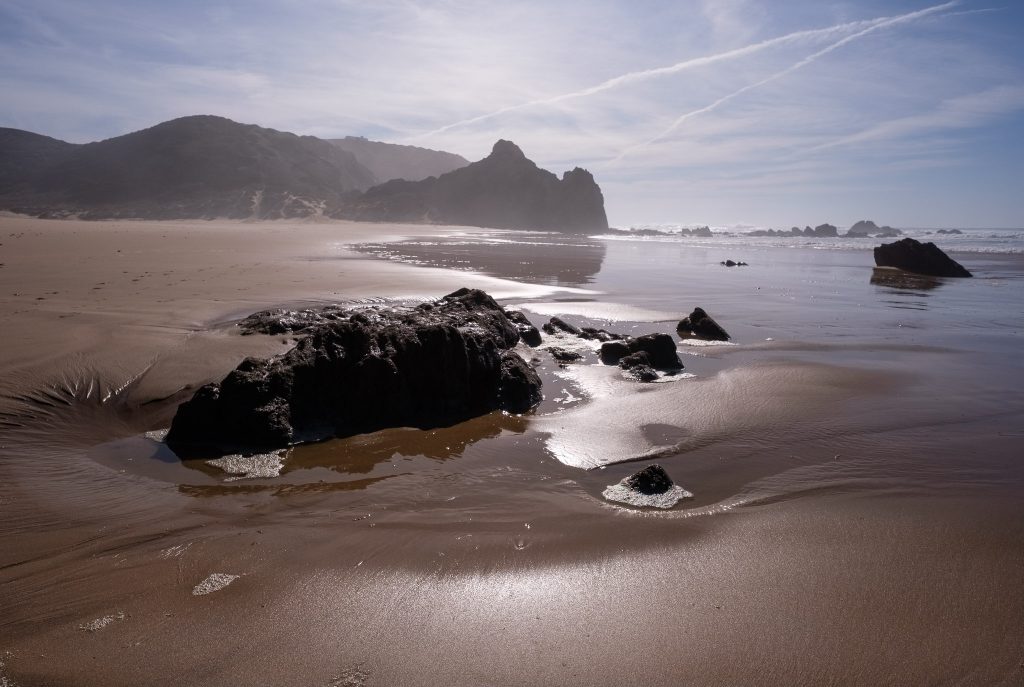This walk starts in the village of Odeceixe, which is located in the southwest coast of Portugal, in the limit between the provinces of Alentejo and Algarve. It is a companion walk to route 14, which I have described before (see link below). That one was a circular trail that crossed the coastal plateau, reaching the coast and returning to the village along the river Seixe.
Route number 15 also starts in Odeceixe, but heads to the interior, along hilly terrain, approaching the slopes of the Algarve mountains. This is where the source of the river Seixe is located; in fact, a good part of the trail follows the river valley, as indicated in the map below. The total distance is around 16 km.

Leaving Odeceixe behind, the trail heads to the South, crossing cultivated land and a few farms. In the beginning of March, there are some fields of flowers announcing the coming Spring.
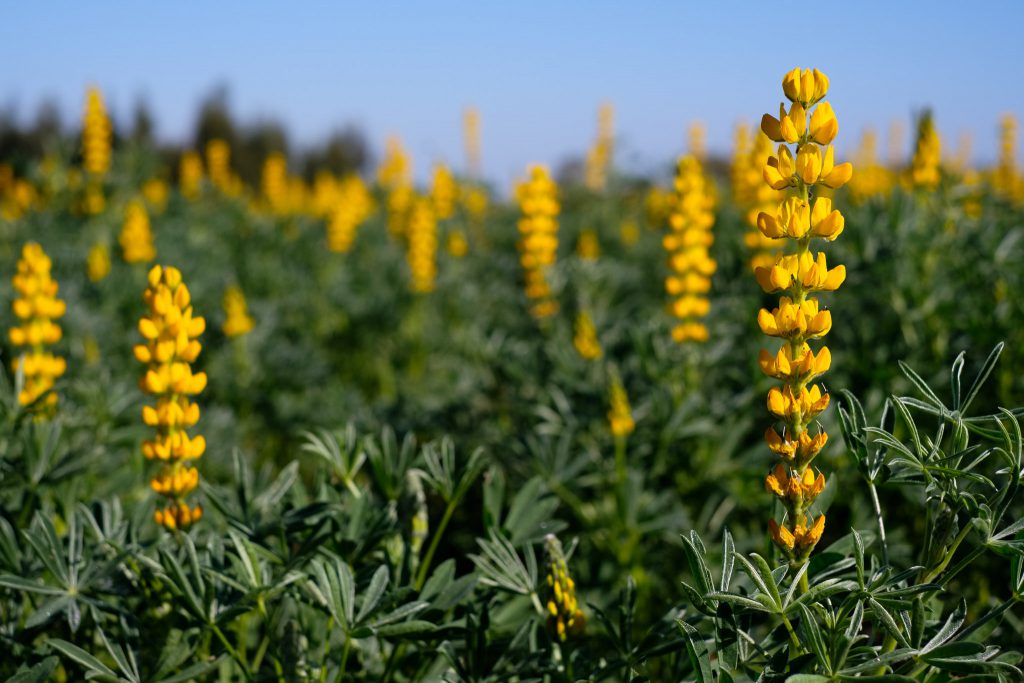
It is an easy walk along the flat plateau, with some pine tree forests along the way. After a few kilometers, the trail starts to descend towards the river Seixe, which makes its way along a narrow valley. This is a wonderful part of the trail, walking close to the running water, and amidst small forests of ash and elm trees. Here and there, frogs jump into the pools.
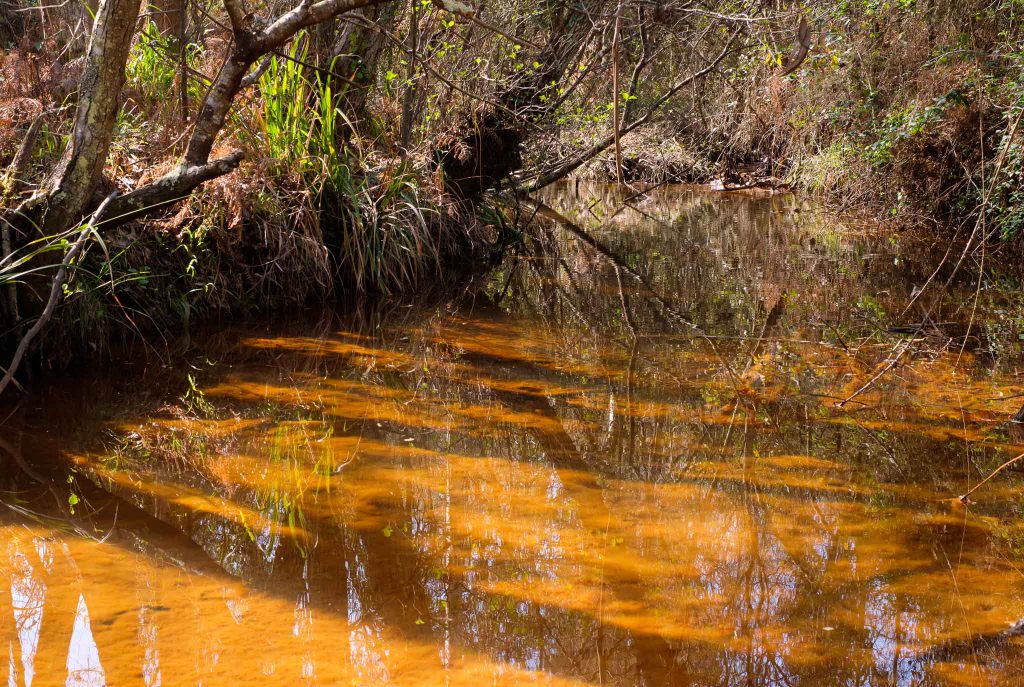
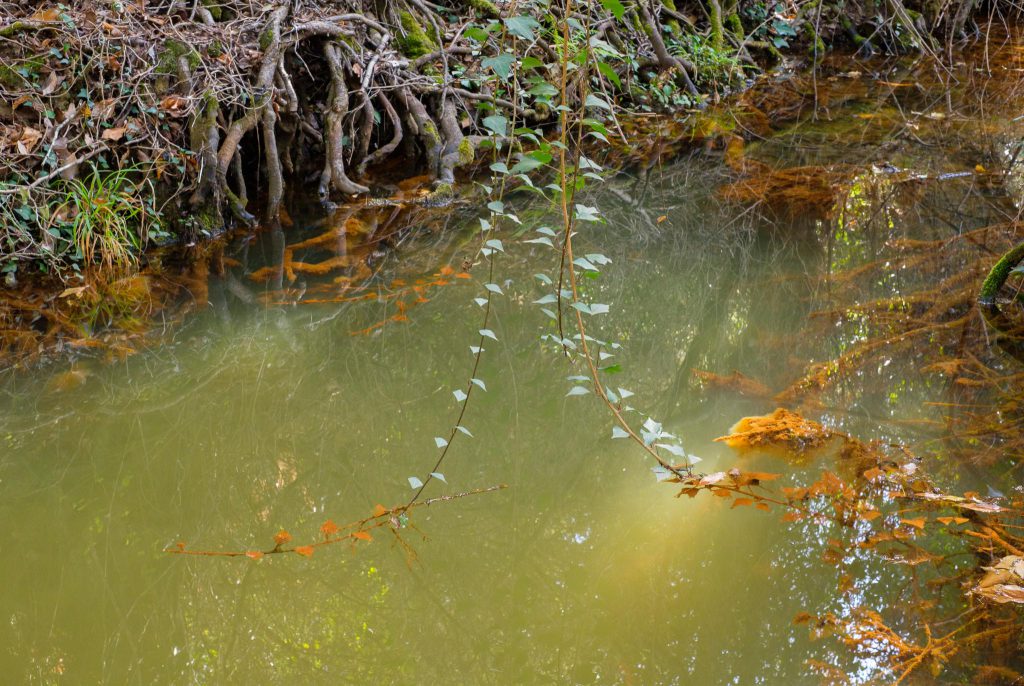
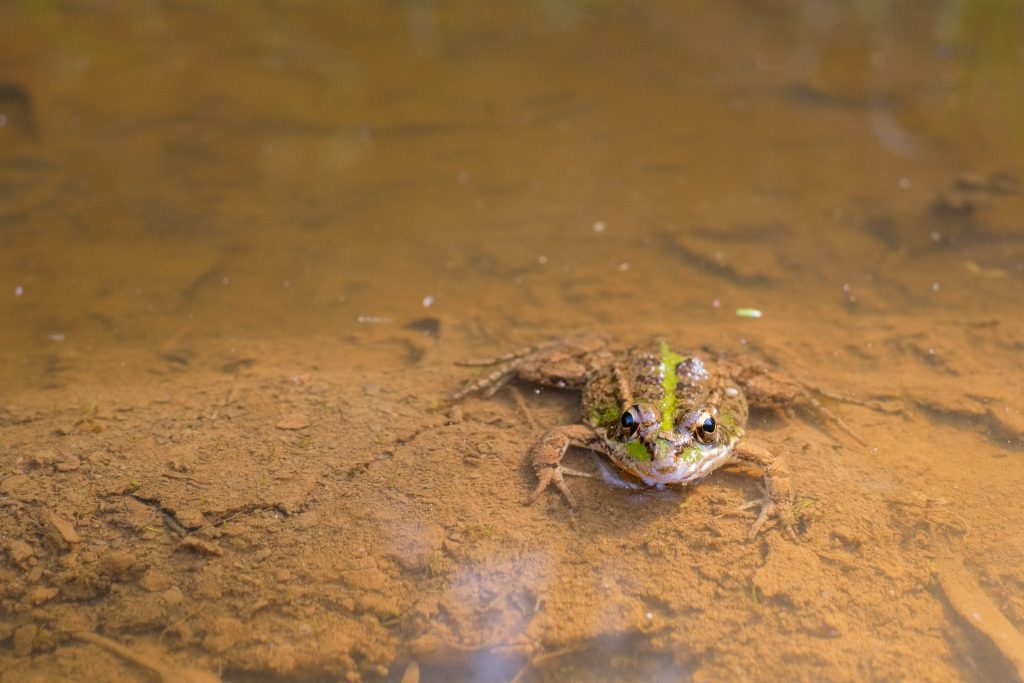
The rest of the walk continues to follow the course of the river, sometimes with a short diversion to the top of the nearby hills. The importance of this small river is clear, especially in the surrounding flat terrain, which is cultivated with seasonal crops and fruit orchards. The water also permits the existence of pasture for grazing animals.
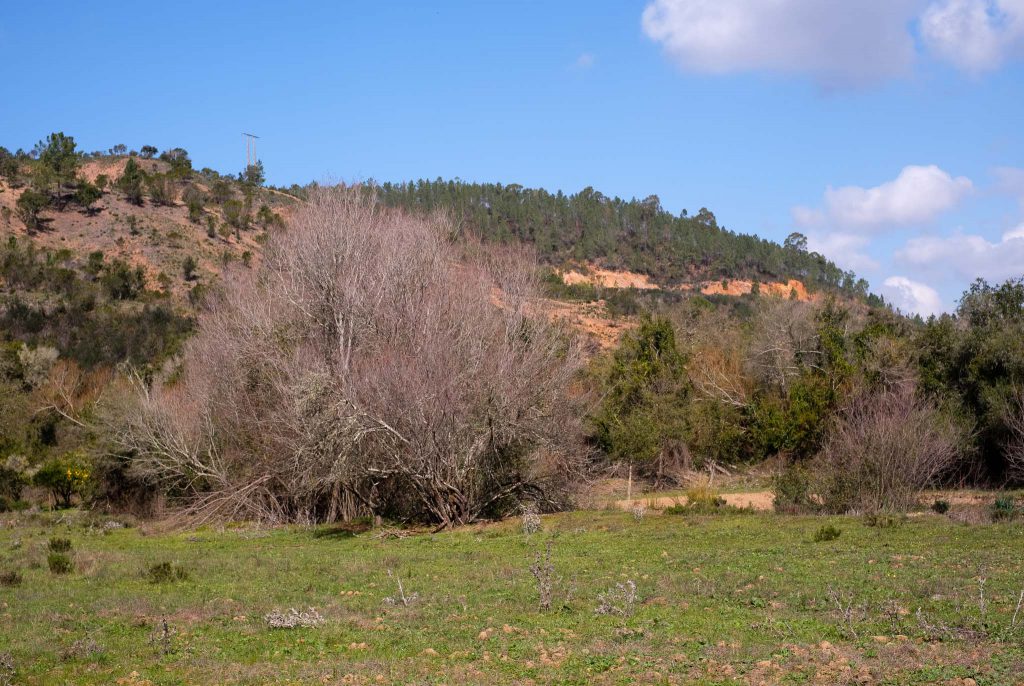

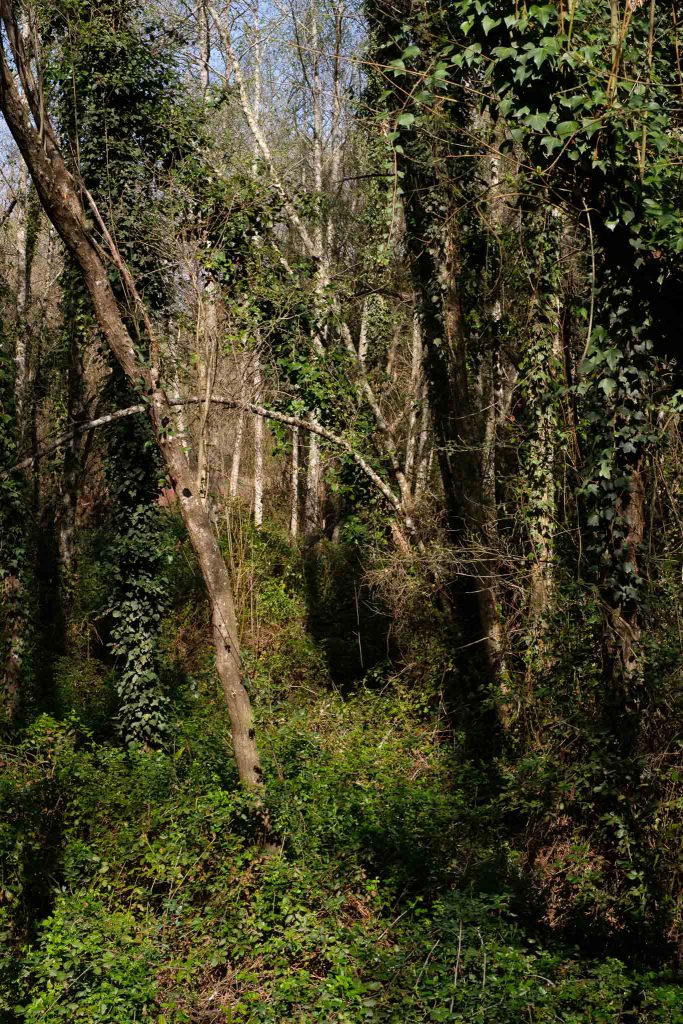
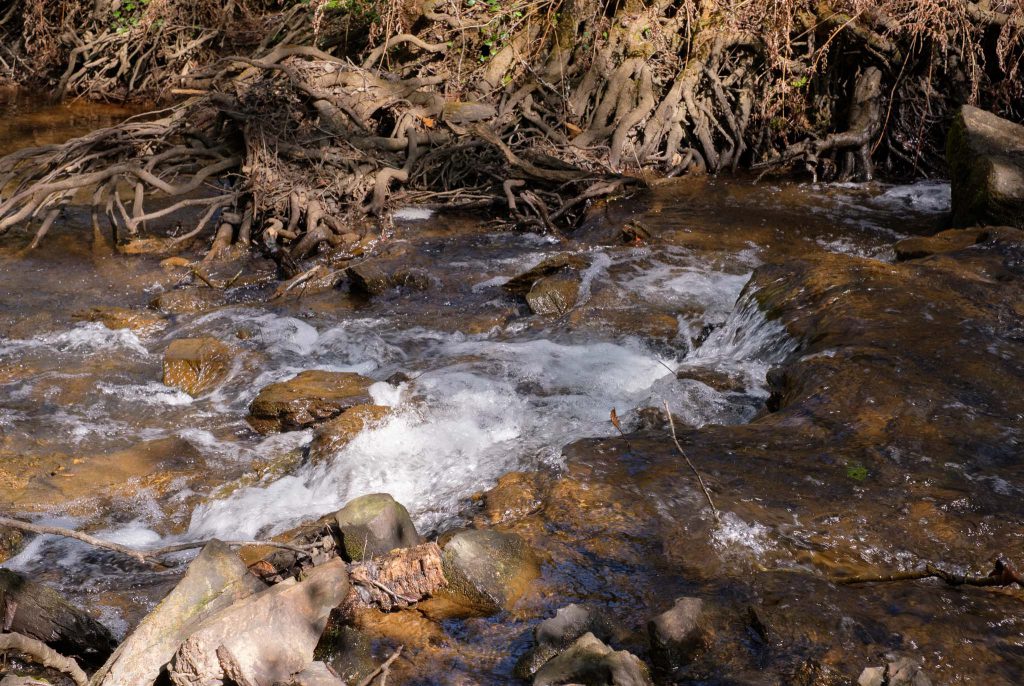
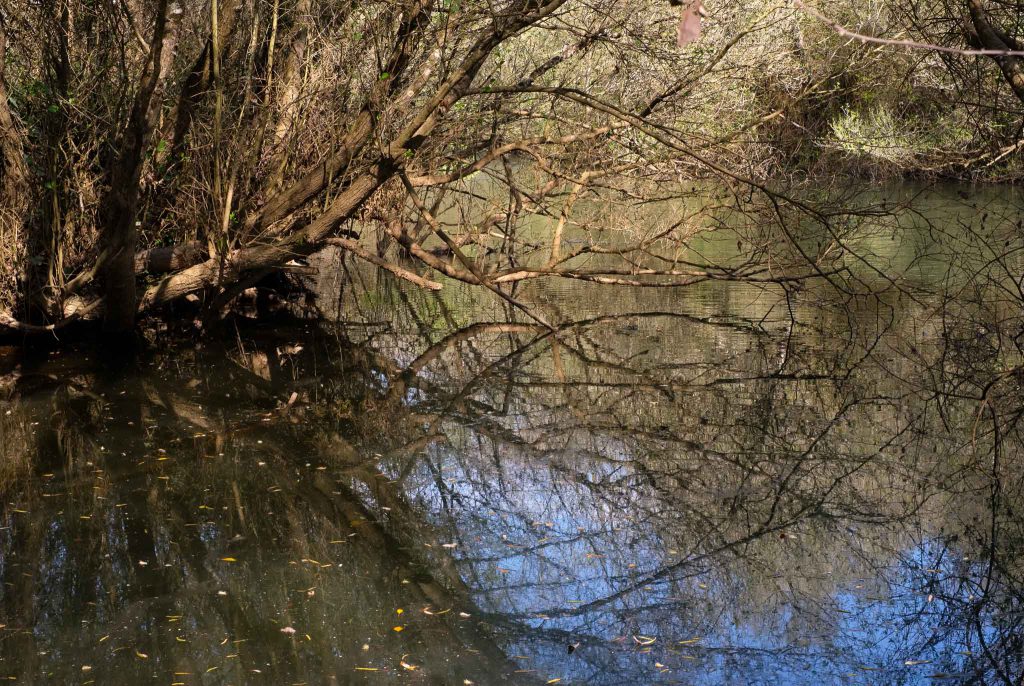
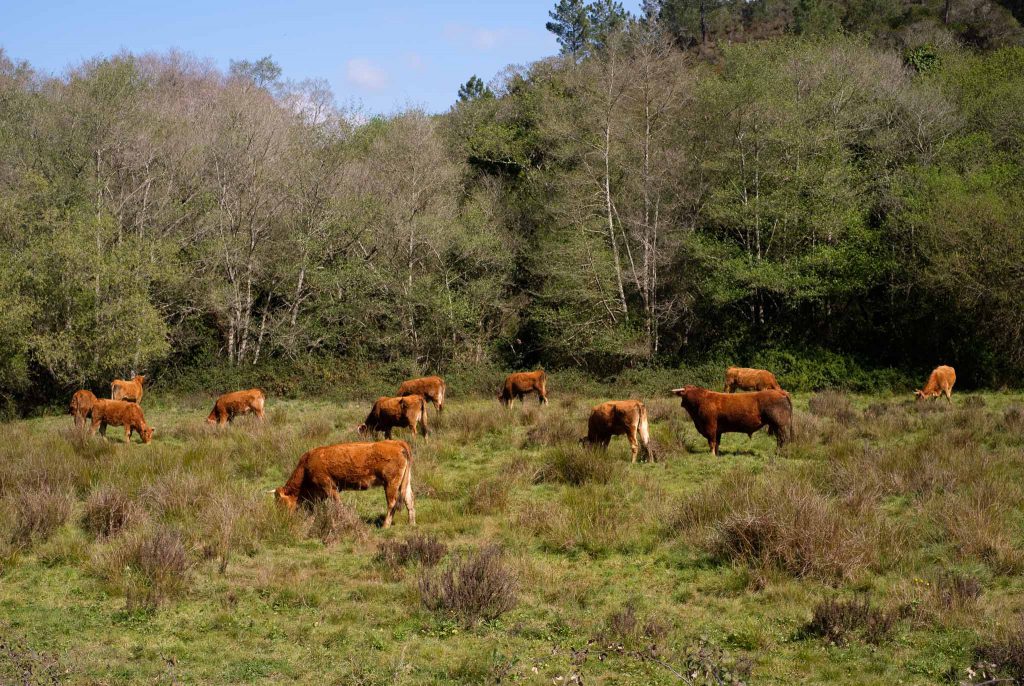
Approaching Odeceixe, the valley becomes wider, and there are more farms along the way. The land is covered in places by yellow rapeseed flowers, and I spend some time making a few photos. During this walk, I only carried the Fujifilm X-Pro3 camera and my trusty 35mm f/1.4 lens, a combination that is flexible enough to cover the different subjects I encountered along the way.
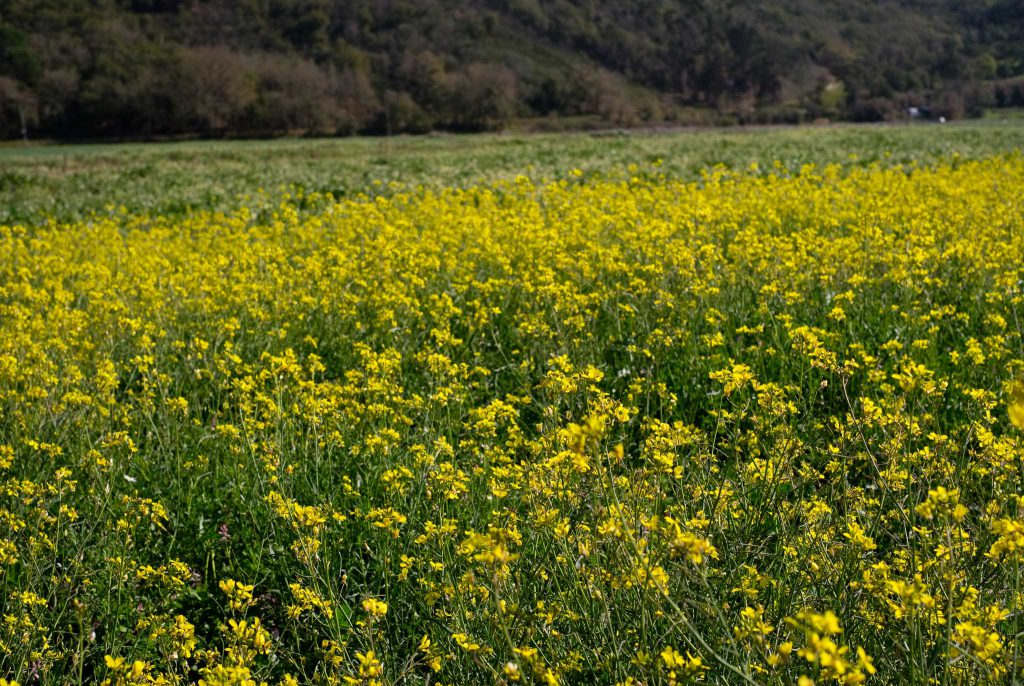
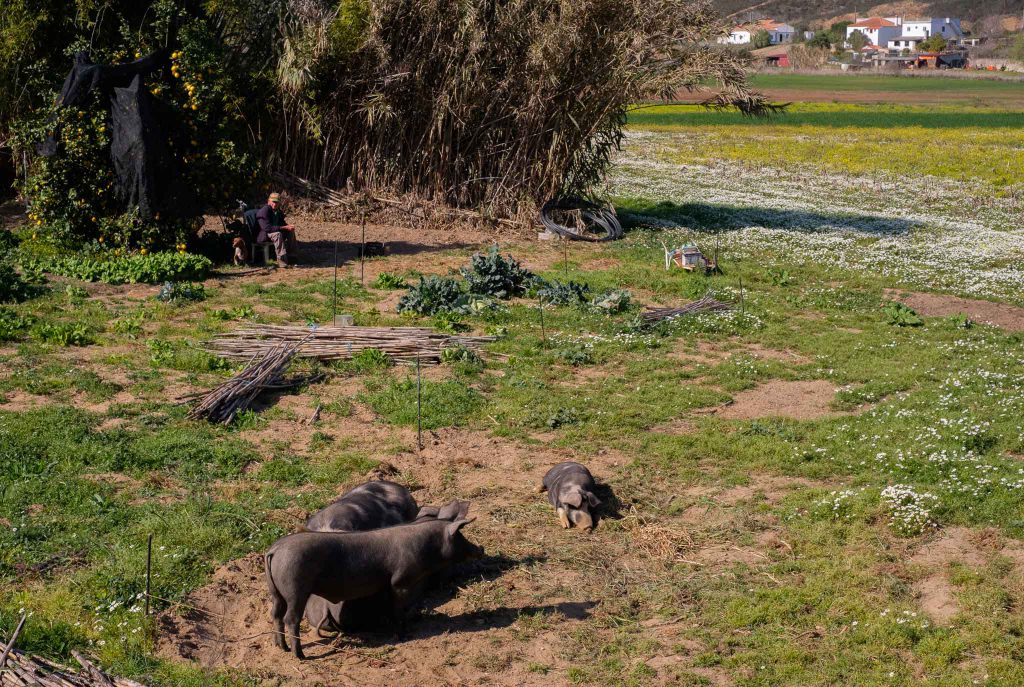
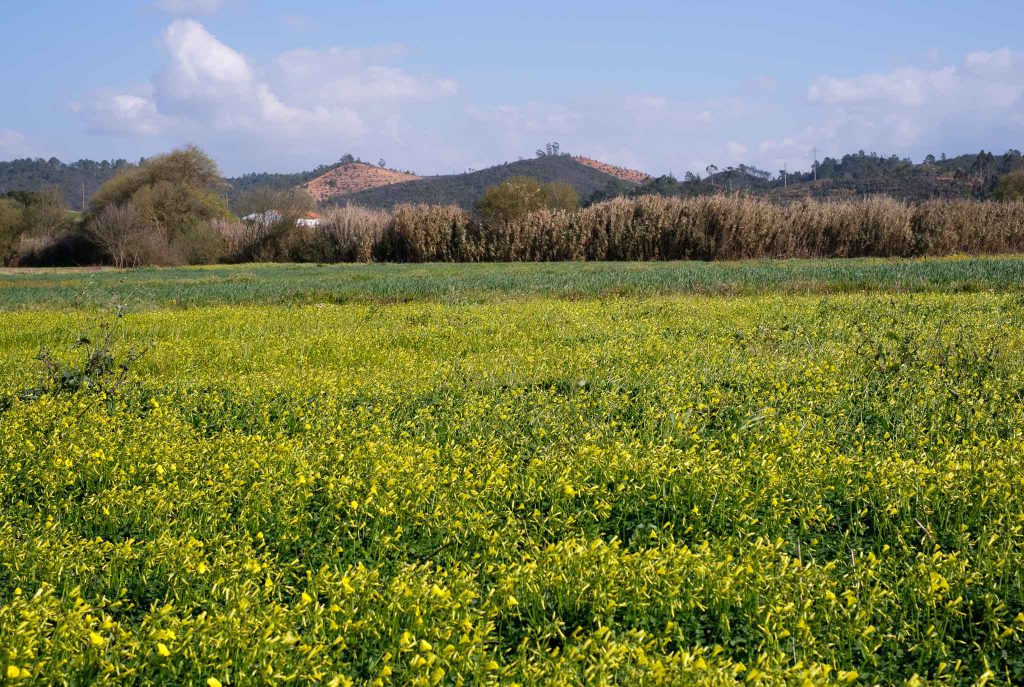
Soon I am back at the starting point, and I rest for a while in a café, where it is possible to taste the local delicacies, which are made with fig, almond, honey and pumpkin. As I mentioned in the beginning, this trail route is an excellent complement to the other path that goes to the coast. Together, they provide a wonderful experience of the region around Odeceixe, which is one of the icons of the Costa Vicentina.

